Immortals of Aveum
Written by - Codiak
Updated: September 9, 2023
|
Posted: August 22, 2023
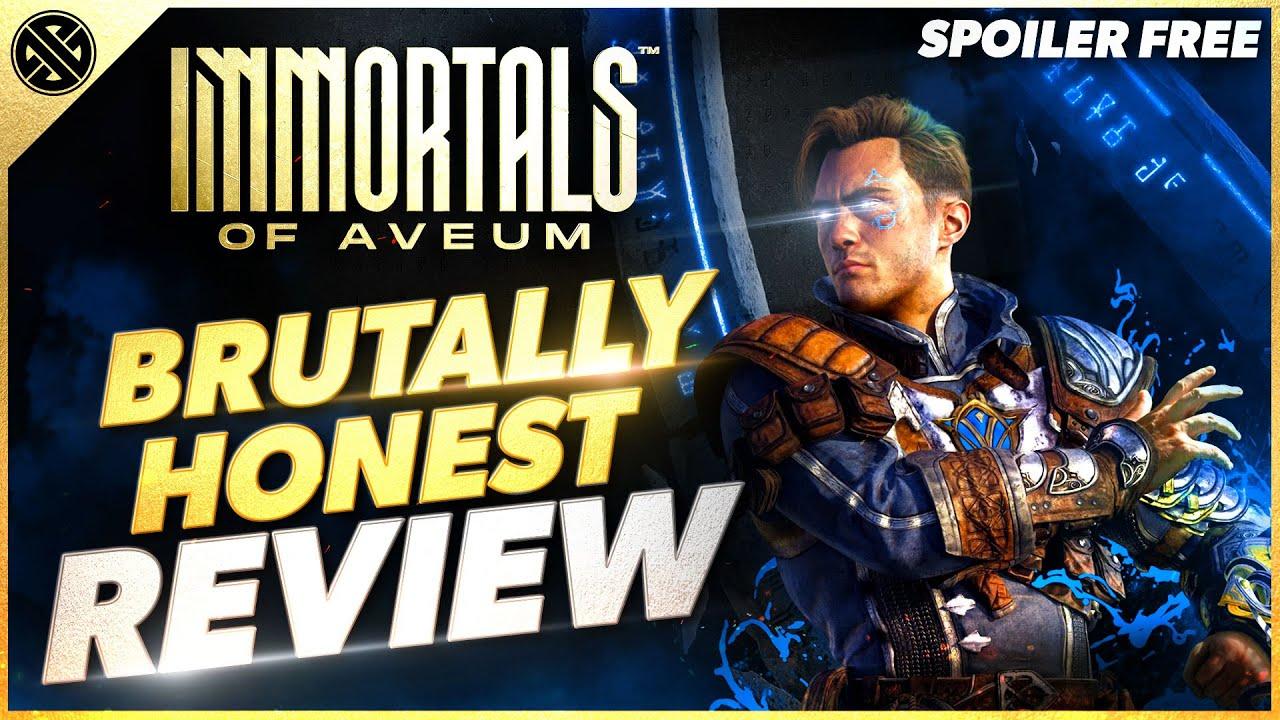
The team and EA and Ascendant Studios were generous enough to provide us with an early access review copy of the game, so a huge thank you to the team for trusting us with their first project. It’s not every day an independent AAA studio pops up, and it’s even more rare to see studios try to compete with the cinematic experiences of established franchises like Call of Duty. Well, that’s exactly what Ascendant Studios set out to do: Call of Duty with magic, and I have to say, if fast-paced, single-player, cinematic action with magic is your thing, you’re in for a treat.
Story
The world of Aveum is at war, an Everwar to be exact. Only two superpowers remain, fighting for control over the remaining magic the world has to offer. Our lowly hero, Jak, has grown up most of his life powerless yet manifests his magic abilities later in life, in a moment only a few experience. While most magic-wielding individuals can only use one of the three colors of magic – red, green, or blue – Jak is a Triarch, which allows him to control all three colors. With his new abilities, he’s thrust into the war against his will and set down a path to uncover the mysteries of Aveum.
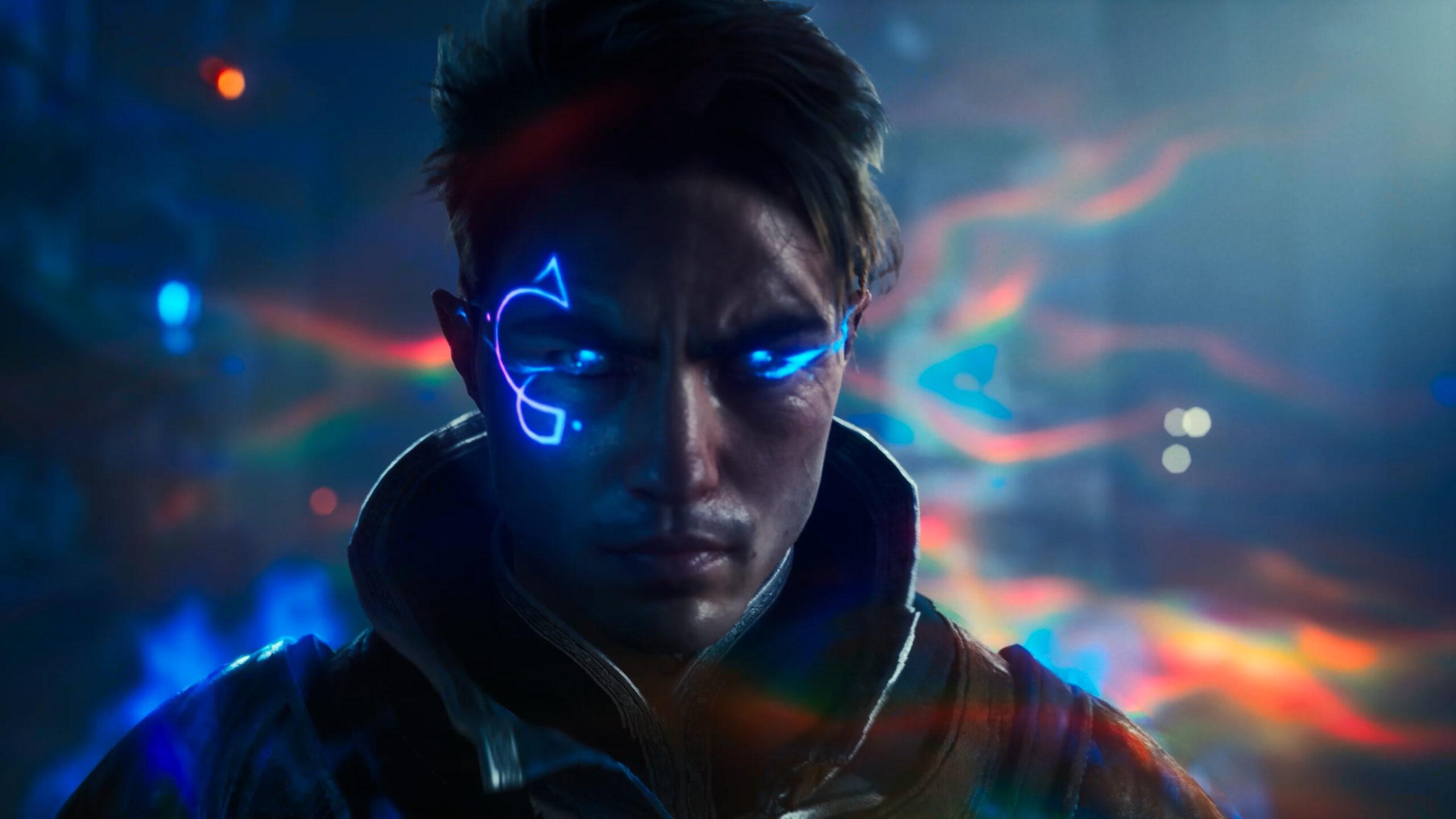
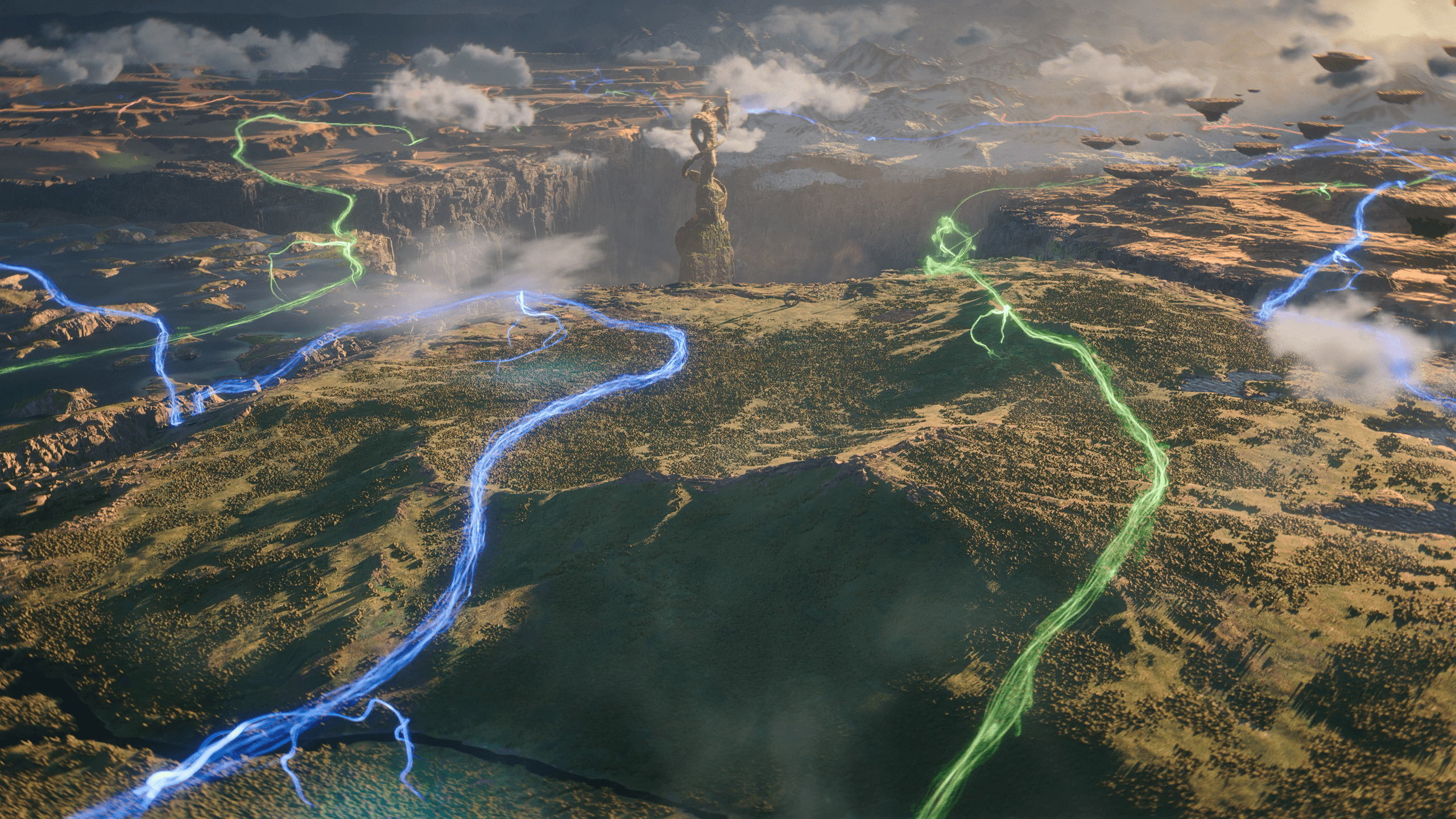
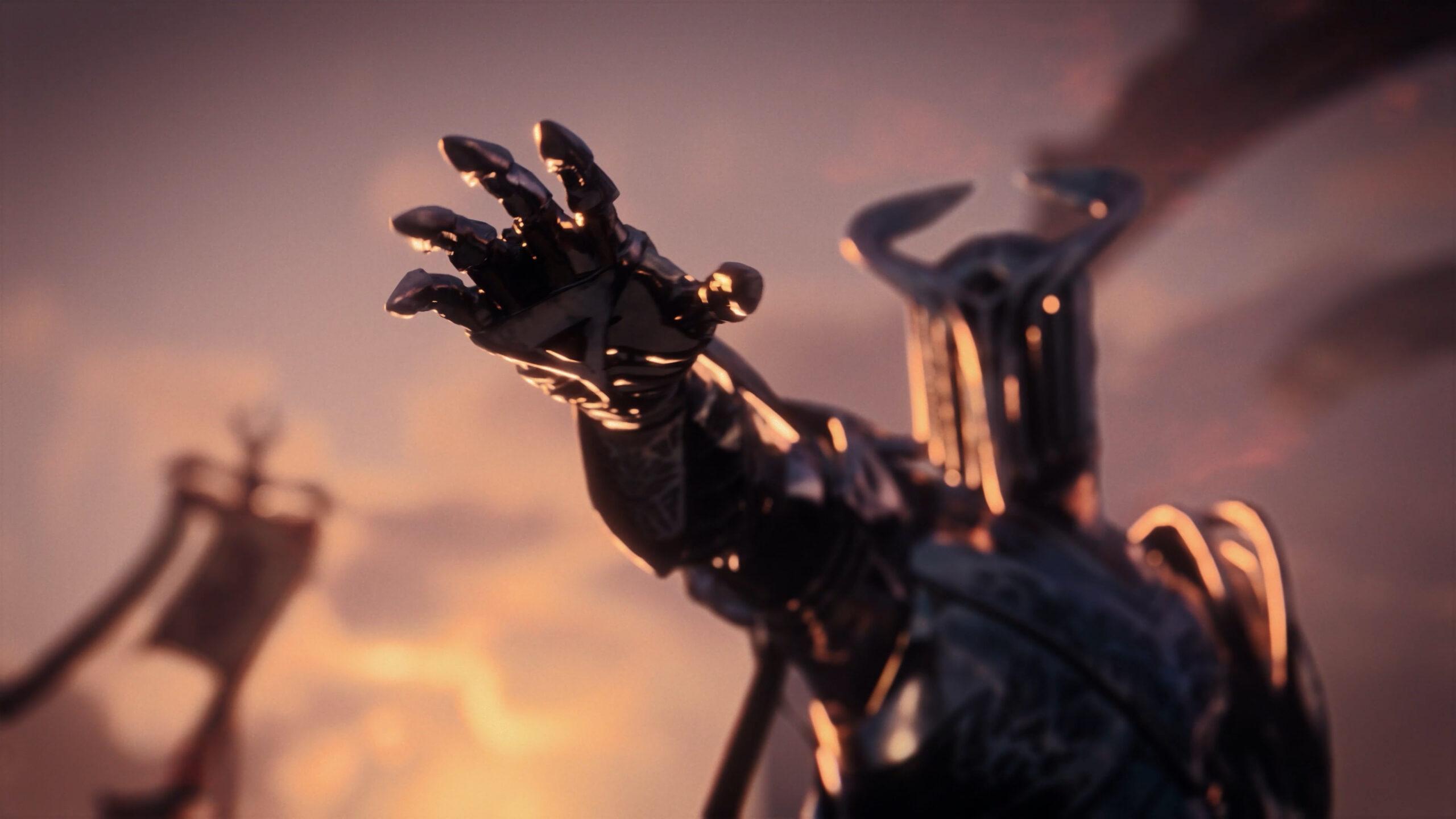

It’s not a new story arc by any means. In fact, I’m pretty sure it’s been told a few dozen times throughout the years in various forms. An individual comes upon some strange, new power, doesn’t want it, and is forced to shoulder the burden that comes along with said power. So besides the original world of Aveum and its characters, what makes this story any different? It all in the execution and with Bret Robbins at the helm, tapping into his extensive background developing single player action games it’s clear there’s a level of storytelling there thats familiar and polished.
The team set out to create an epic and exciting cinematic experience and at first I was like, “Great, a ton of cutscenes that take control away from me as the player and leave me watching the game vs. playing it.” I’m happy to report that’s not the case at all. Don’t get me wrong, there are a bunch of those moments, but they’re evenly spread throughout the game and/or short enough to where they really don’t break the immersion. Obviously your tolerance for this is going to vary from player to player, but we found the balance spot on.
The overall arc was very well-paced, and the writing was pretty great as well. There weren’t many, if any, plot holes and no awkward “how’d we get here” moments. Each thread was followed and, coupled with the optional lore books, explained in plenty of detail to understand the weight of where the story was and the impact of new details you uncovered. Coupled with a few genuinely cool plot twists, it was a satisfying narrative that left me feeling like I had experienced a complete end-to-end story with the gameplay augmenting that experience.
It was a satisfying narrative that left me feeling like I had experienced a complete end-to-end story
This is enhanced even more by an impressive lineup of voice actors that bring each character, both good and bad, to life. Are there some cheesy lines? Absolutely, but they were delivered so well in their context, it came across as natural and I even found myself thinking “I would have responded the same way”. The writing even makes fun of itself on multiple occasions, with characters calling out the cheeky lines and intentional awkward dialogue. If you’ve played enough single player games, you’ll know it’s hard to find that sweet spot between natural storytelling and overly scripted dialogue, but the team marries the two well, and it really helps bring everything to life, even if it’s not the deepest story,at least on the surface.
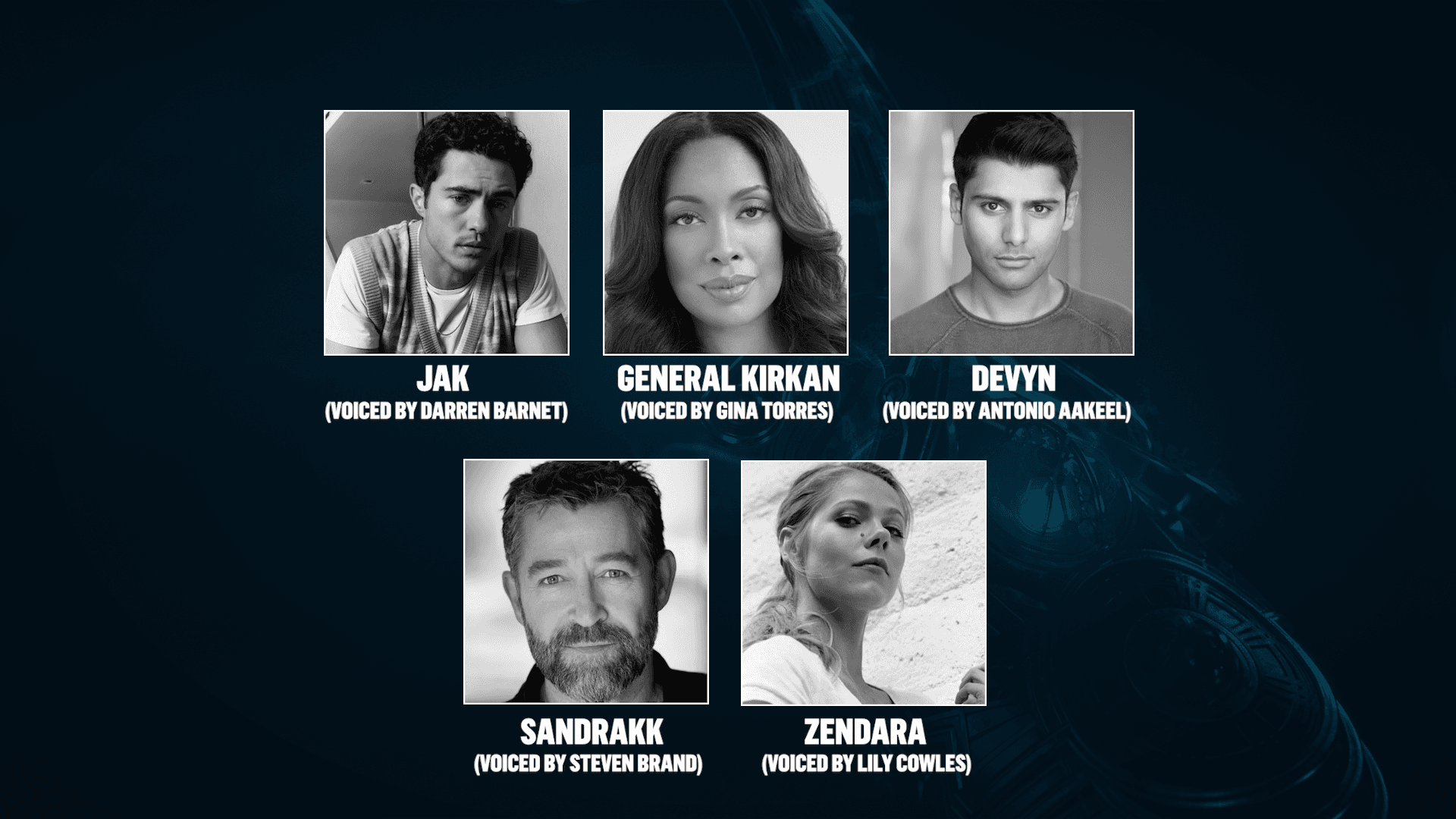
Gameplay Systems
Now we love a good story here at Legacy Gaming, and that’s important in this kind of single player action game, but the more important question is this: Is Immortals of Aveum fun? My god, this was fun as hell. The combat, the puzzles, traversal, loot – you name it, I had an absolute blast, and there are plenty of systems that all contribute to my enjoyment. Some great, and some just mediocre, but fun none-the-less
As a Triarch magic wielder, you have three schools to choose from based on your situation. These are pretty much laid out like traditional FPS weapons, each having their strengths and utility.
Blue Magic focuses on straight, accurate long-range damage which also contributes to breaking down shields.

Red magic is for close-quarters scenarios; high damage, short range, capable of breaking down armor and unleashing AoE.

Green magic usually involves a high rate of fire, high energy capacity, with projectiles that have a tendency to home in on a target. This school of magic is also used to manipulate the time and space of objects as well as limiting an enemy’s ability to cast or heal.
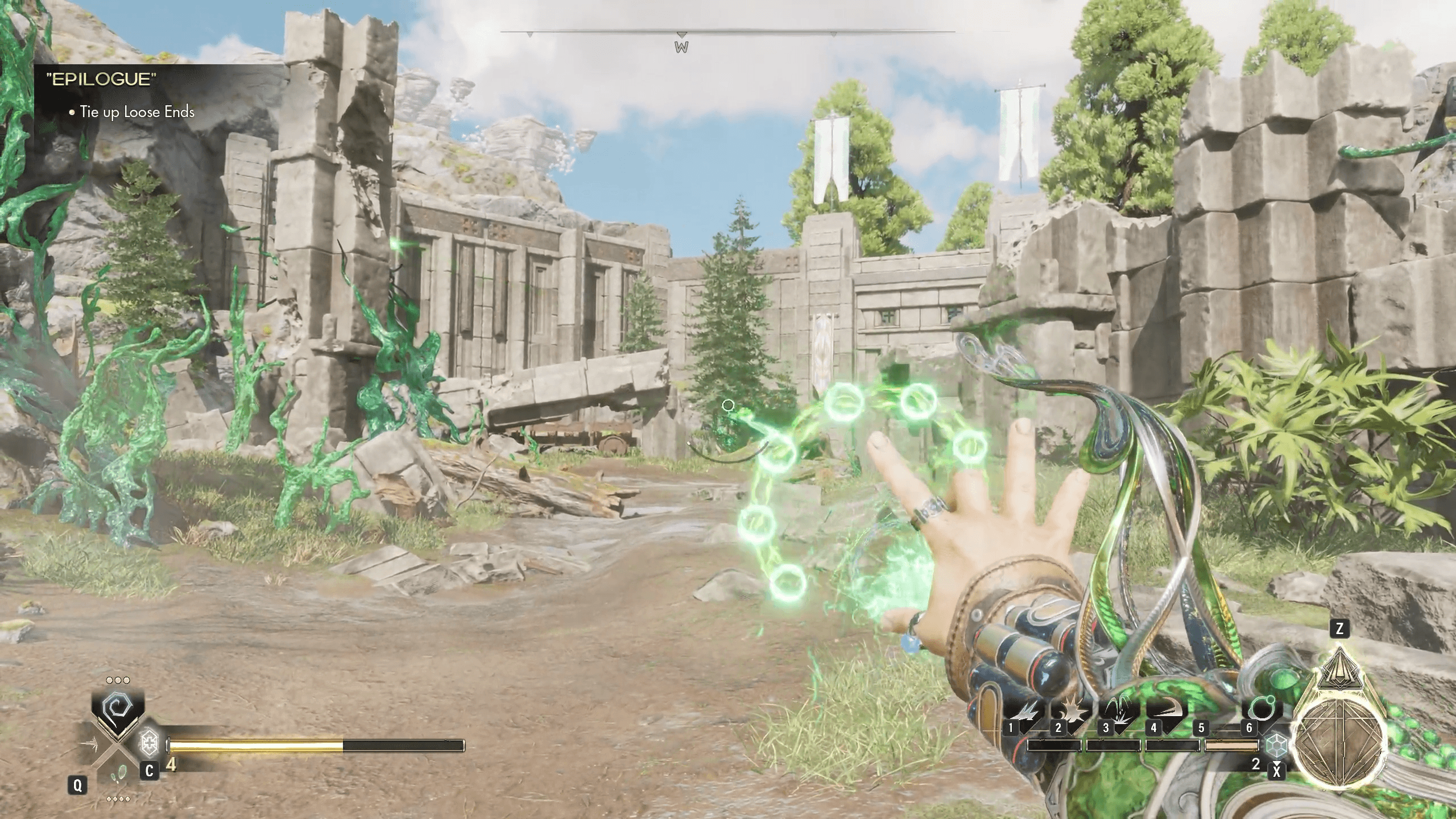
These attacks all take on slightly different properties or styles depending on the sigils you have equipped, gauntlet-like magical device that you wield on your right arm. Throughout the game, you’re able to purchase, find, and upgrade sigils that you acquire in order to more directly cater to your preferred playstyle. Within each color of magic, your primary sigil’s fire can be modified into one of three possible types of what are called strikes. These can be mixed and matched for various effects, and I think it was a neat way to introduce variety while still being limited to those three core colors. All in all, there are technically nine options to choose from, offering a good variety of choice across your three primary “weapons”.
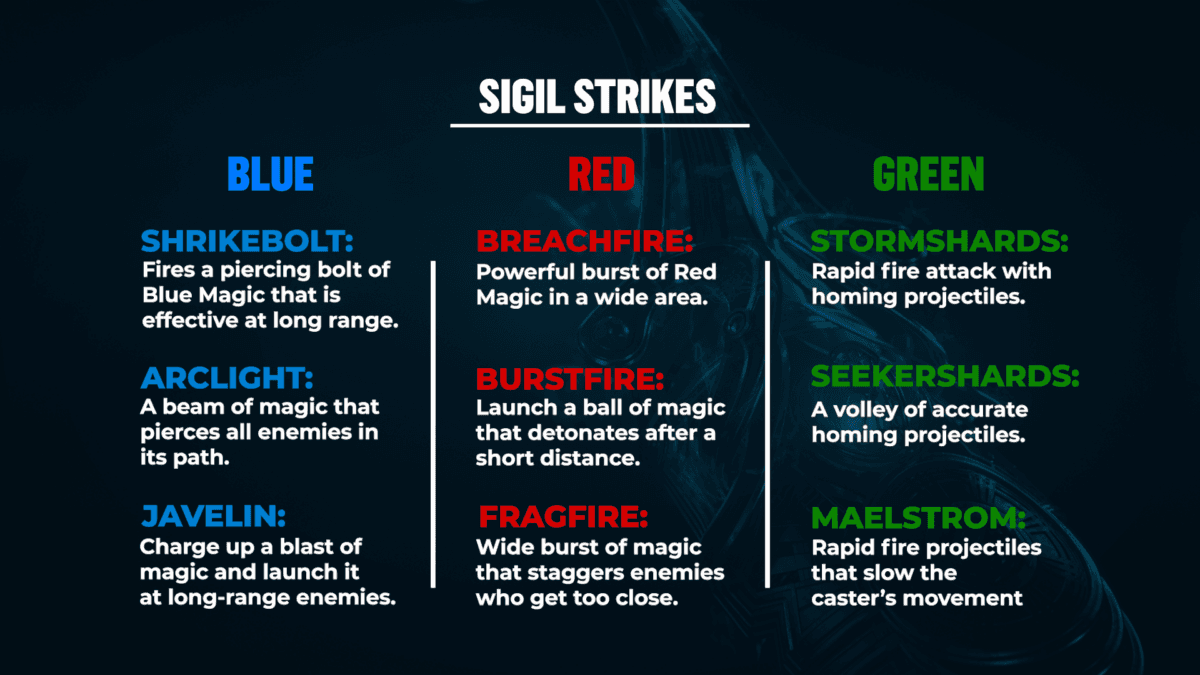
You’ll also obtain additional gear in the form of two rings, one bracer, and three totems that all increase your magical power or grant you additional bonuses or abilities.
While the rings are straight stat boosts, Totems directly augment your kit with new control abilities. For example, the blue totem offers Lash, which allows you to pull enemies toward you and also grants you the ever-handy grapple to traverse the environment. The red totem shoots a beam that staggers most enemies and is also used to refract light in various puzzle and progression scenarios. Finally, the green totem shoots Limpets which are a green control projectile that allow you to slow down both enemies and environment elements they come in contact with.
At all times, you’ll also have access to your shield, raising your left hand to absorb all manner of attacks from 360 degrees, all the while allowing you to shoot through it. This does have a limit to how much damage it can absorb before it breaks, and it does reduce your overall mobility while active. Personally, I found the shield to be the unsung hero of the game. Immortals of Aveum combat pacing is lightning fast and unlike games like Doom and Wolfenstein that pioneered that boomer shooter style the shield adds a controllable way to almost slow down the action and give your brain the time it needs to catch up.
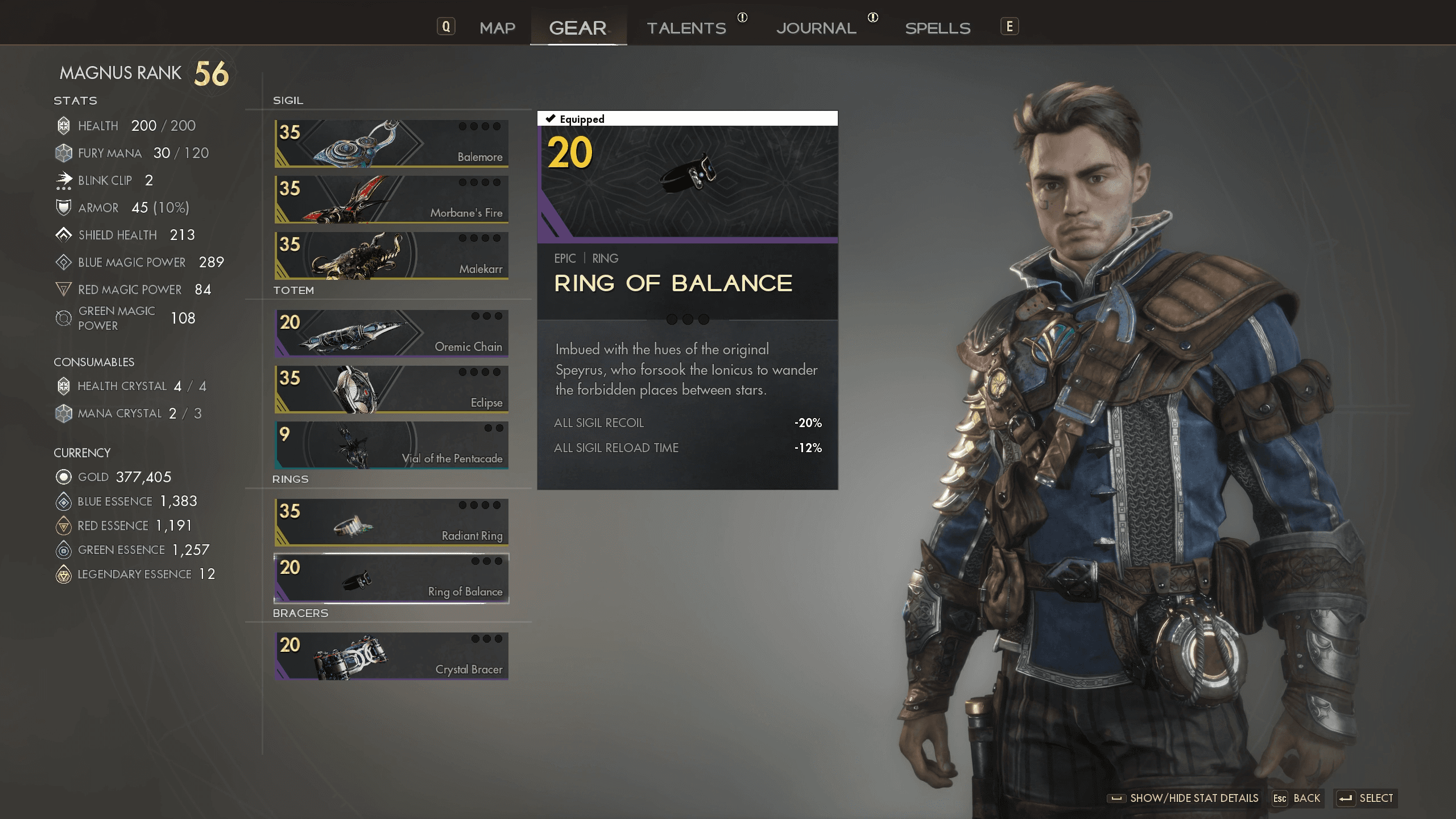
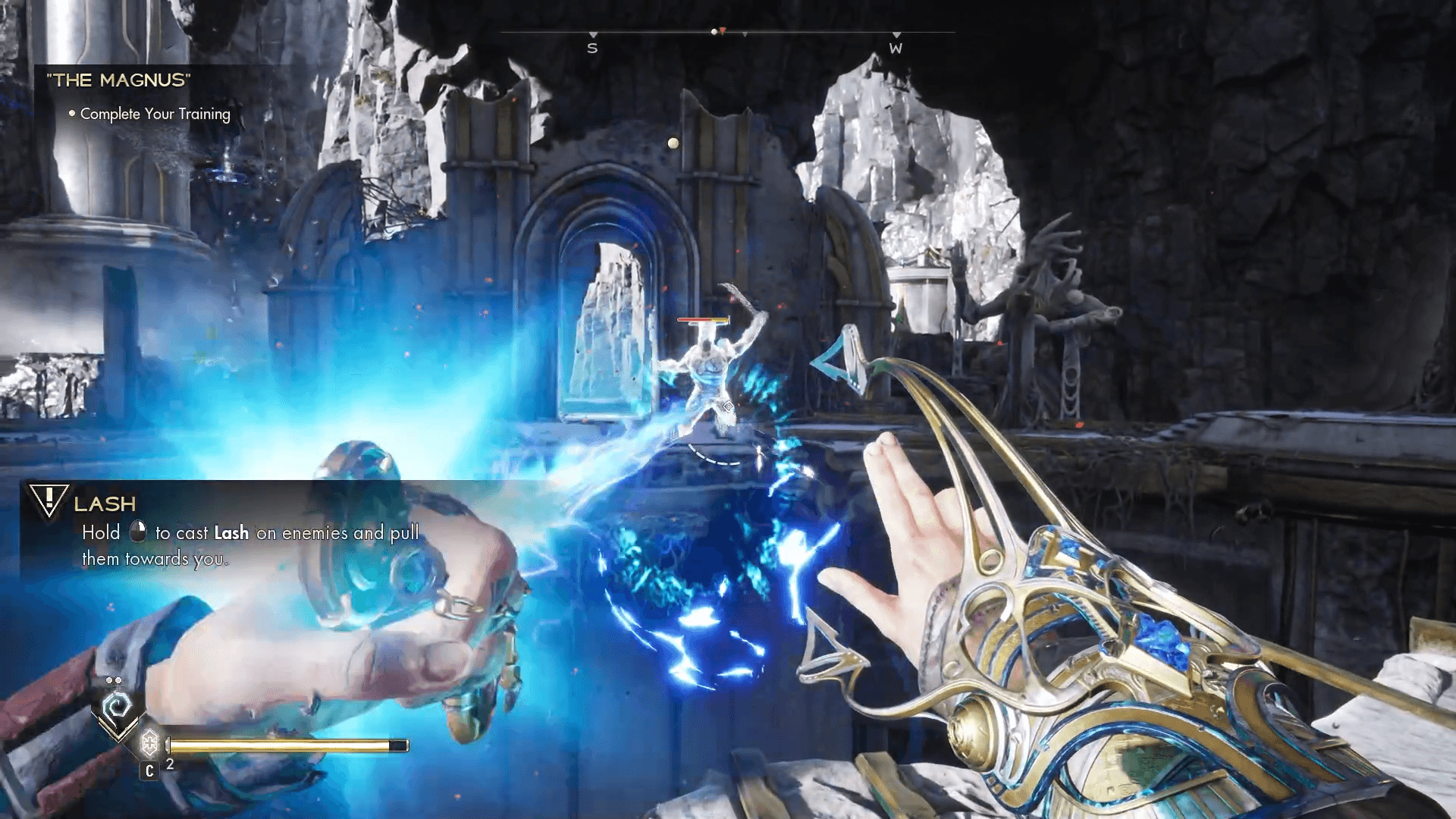
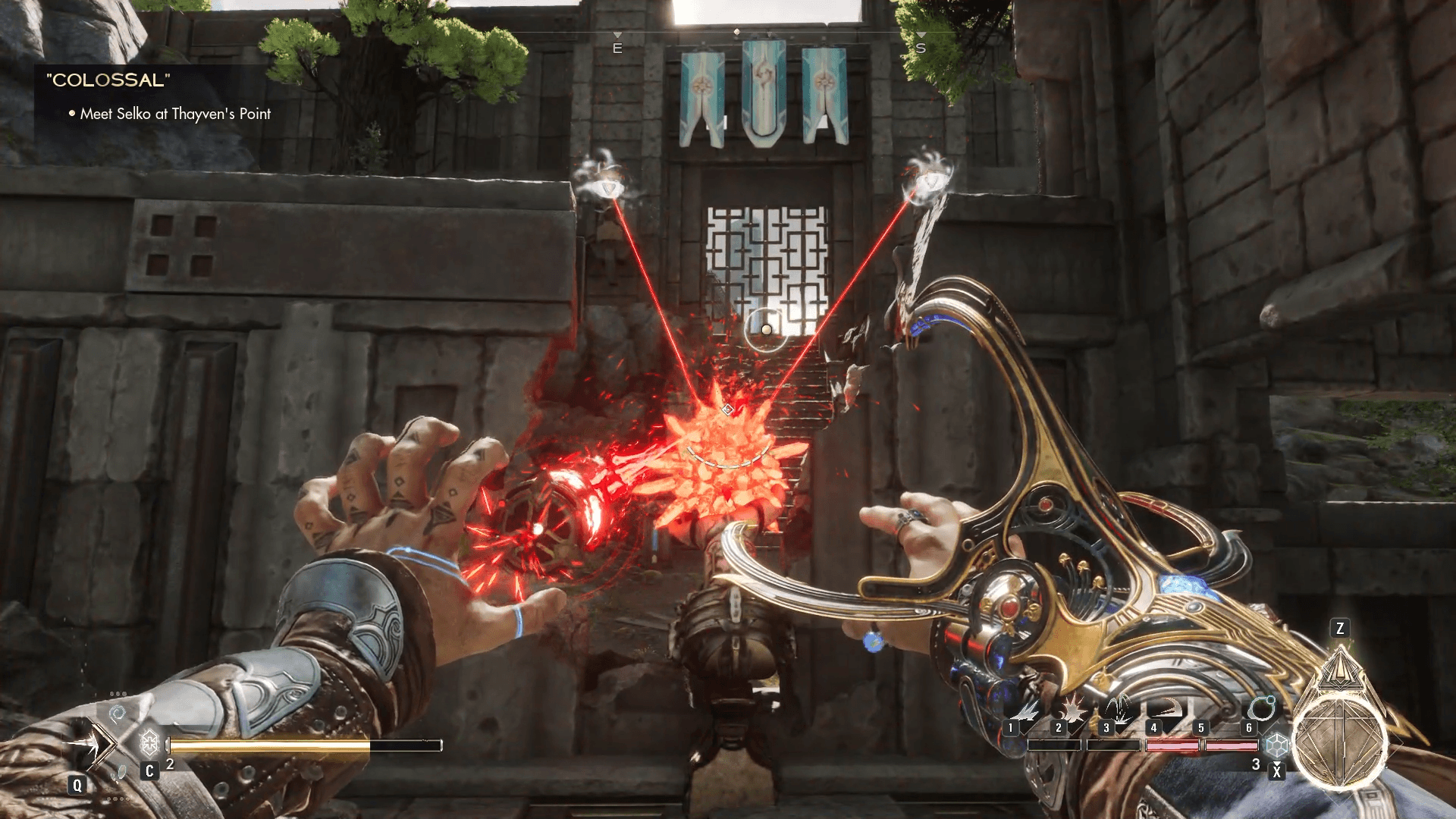
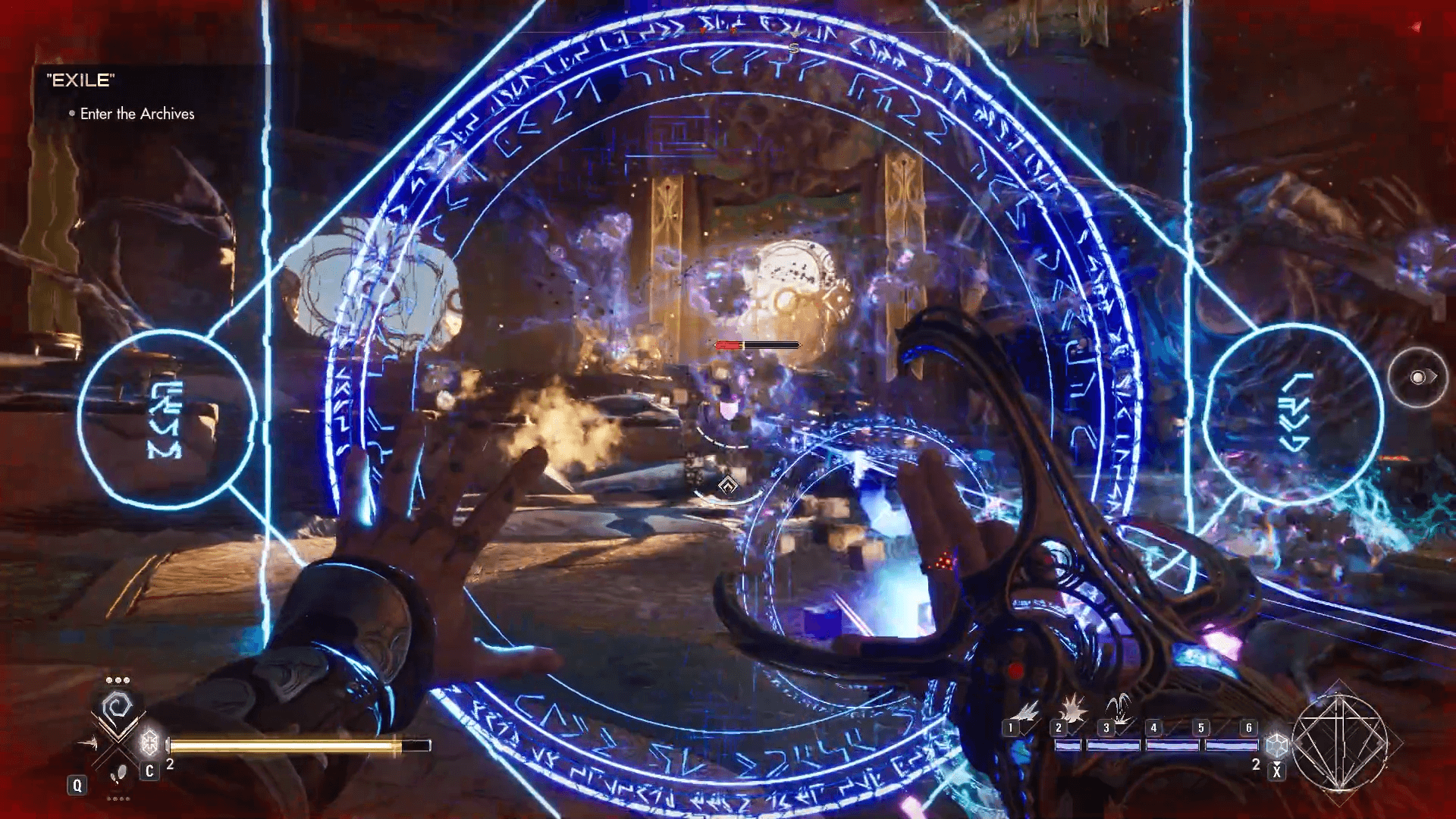
There are also Furies, larger, more powerful spells that use mana from your reserves in order to cast. This mana resource is only replenished by consuming mana crystals, which are found all around the environment. Each Fury is associated with a color that, as we touched on before, also has an intended effect depending on your enemy’s proximity and attributes. These range from shield breaking forces, to massive AOE fire balls. Consider these the “special abilities” of the game and they’re great additions to the action that offer brief moments of field clearing power that help you quickly level the odds.
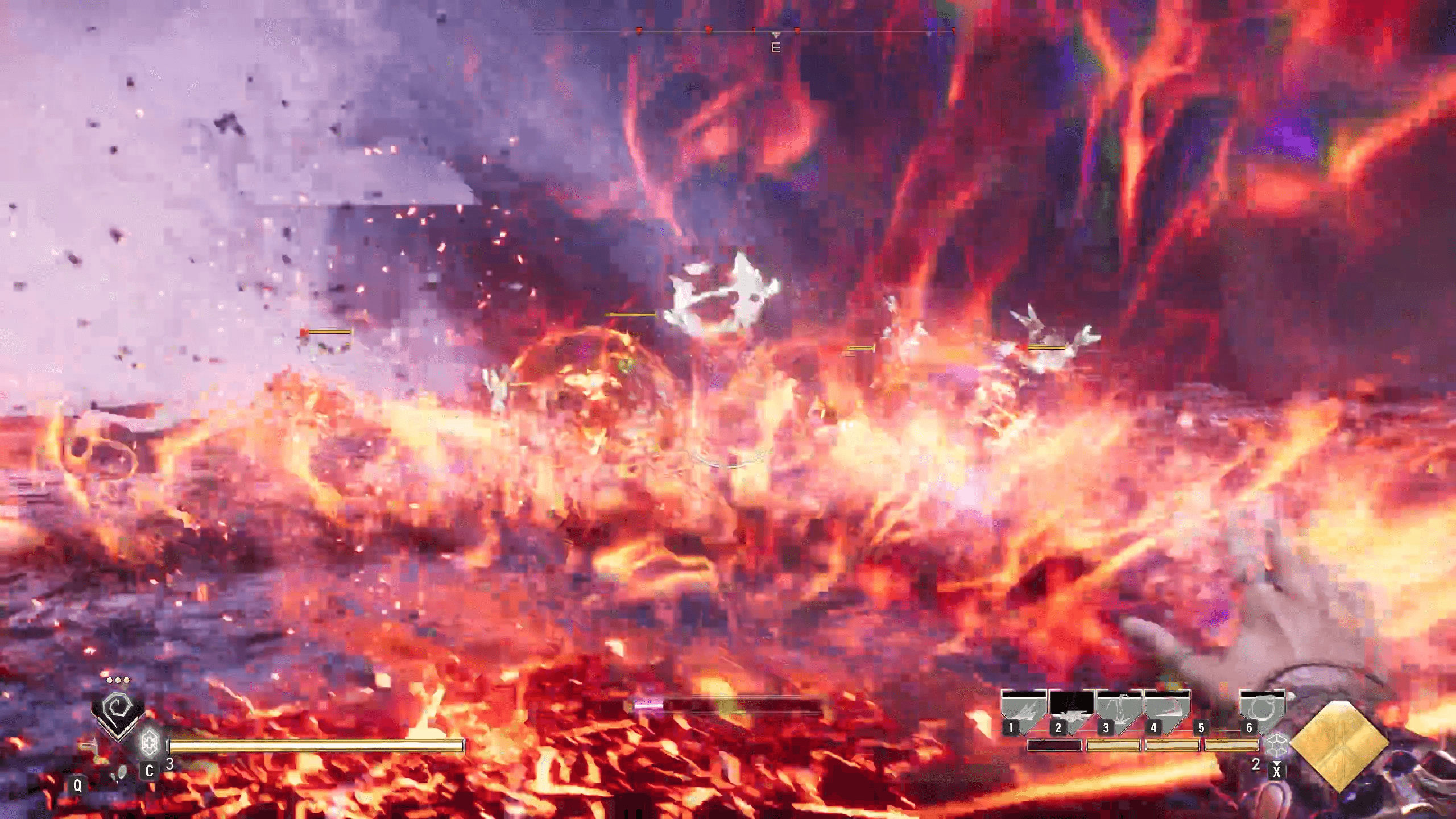
And, of course, what’s a good magic battle system without some way to culminate all that power into one shot, an ultimate if you will? The Dominion spell “Immolate” does just that, combining the magic of all three colors into one. It’s simply a beam of energy that’s channeled until the Dominion mana pool runs out. Dominion mana regenerates throughout the course of battle and is supplemented with the occasional mana potion you can pick up. When the Dominion pool fills up, you can use the ability. Pretty straight forward.
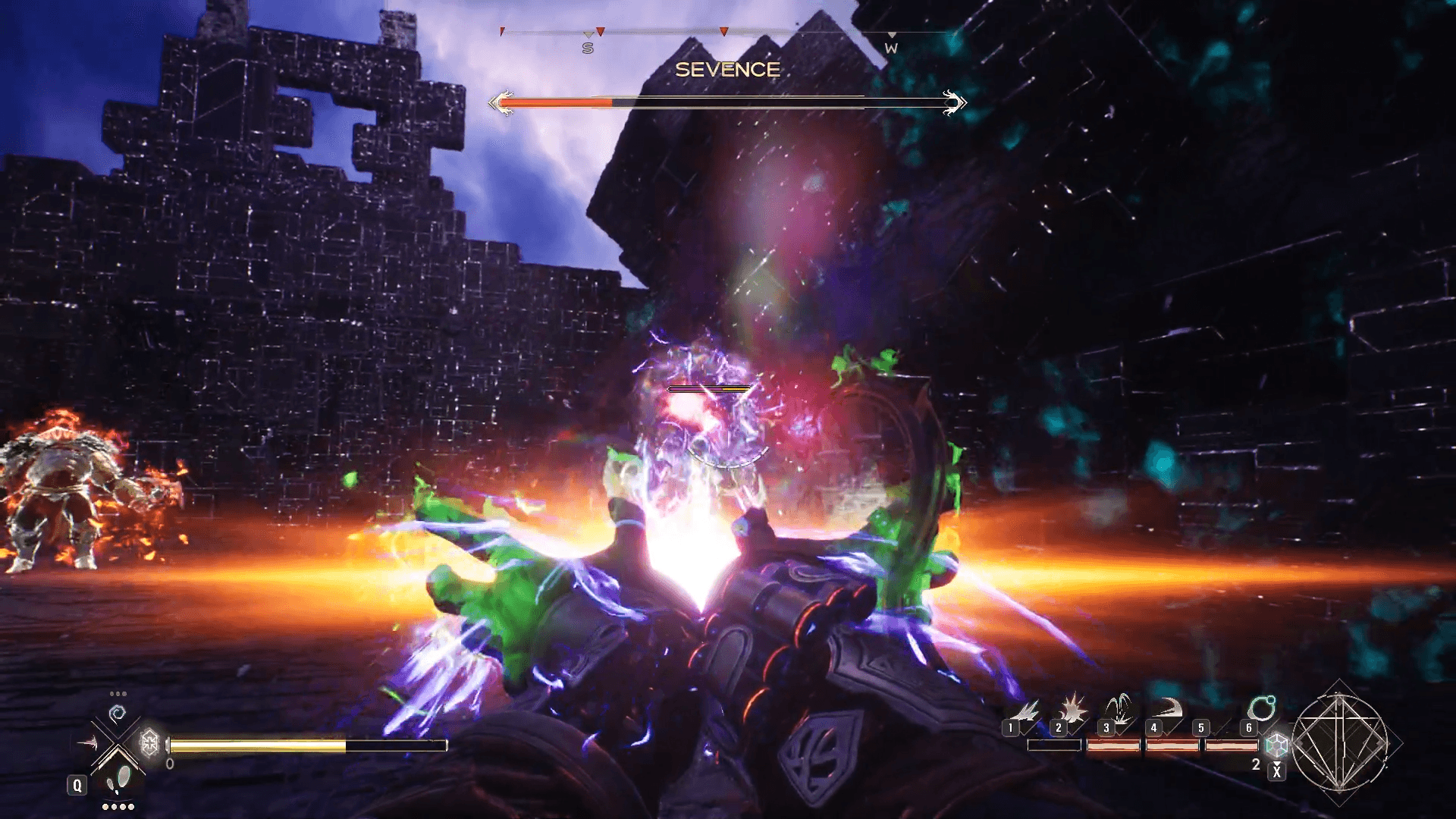
When you throw all of this together, it leads to one hell of a chaotic battlefield experience, but with the help of Jak’s traversal skills, double jump, hover, and dash, you can make short work of everything around by strategically placing that perfect shot. After all, if you couldn’t tell by the gameplay, the number one rule in the game: never stand still.
Talents
The game’s talent system starts to bring things together a bit more. As you move about the world, defeating enemies, and solving puzzles, you’re rewarded with points that eventually accumulate into a single Ascension, or talent point. I was really pleased to see talents that actually change the dynamic of a skill, be it new or altered functionality. For example, you can heavily branch into your green talent tree to build around your Blink ability, gaining additional Blink charges, reducing recharge time, and increasing damage output when you Blink. You can use this to get close to enemies and then unleash red magic and melee damage, which can be augmented in the red talent tree. No matter what game we play, if it’s got a talent tree our thoughts are the same, give us a system that’s interesting that changes the nature of the things we do in that game, and make our choices feel impactful, and while Immortals of Aveum doesn’t really innovate in this space, it fulfills the criteria we’re looking for that help make for a more engaging progression system.
Is the talent system a build-crafter’s dream? No, far from it, but it’s nice to see there is enough variety that you can play around with and try out a few different builds to see what suits your playstyle best. There’s no indication if talent points are capped, but there is an easy way to reset your talents should you want.


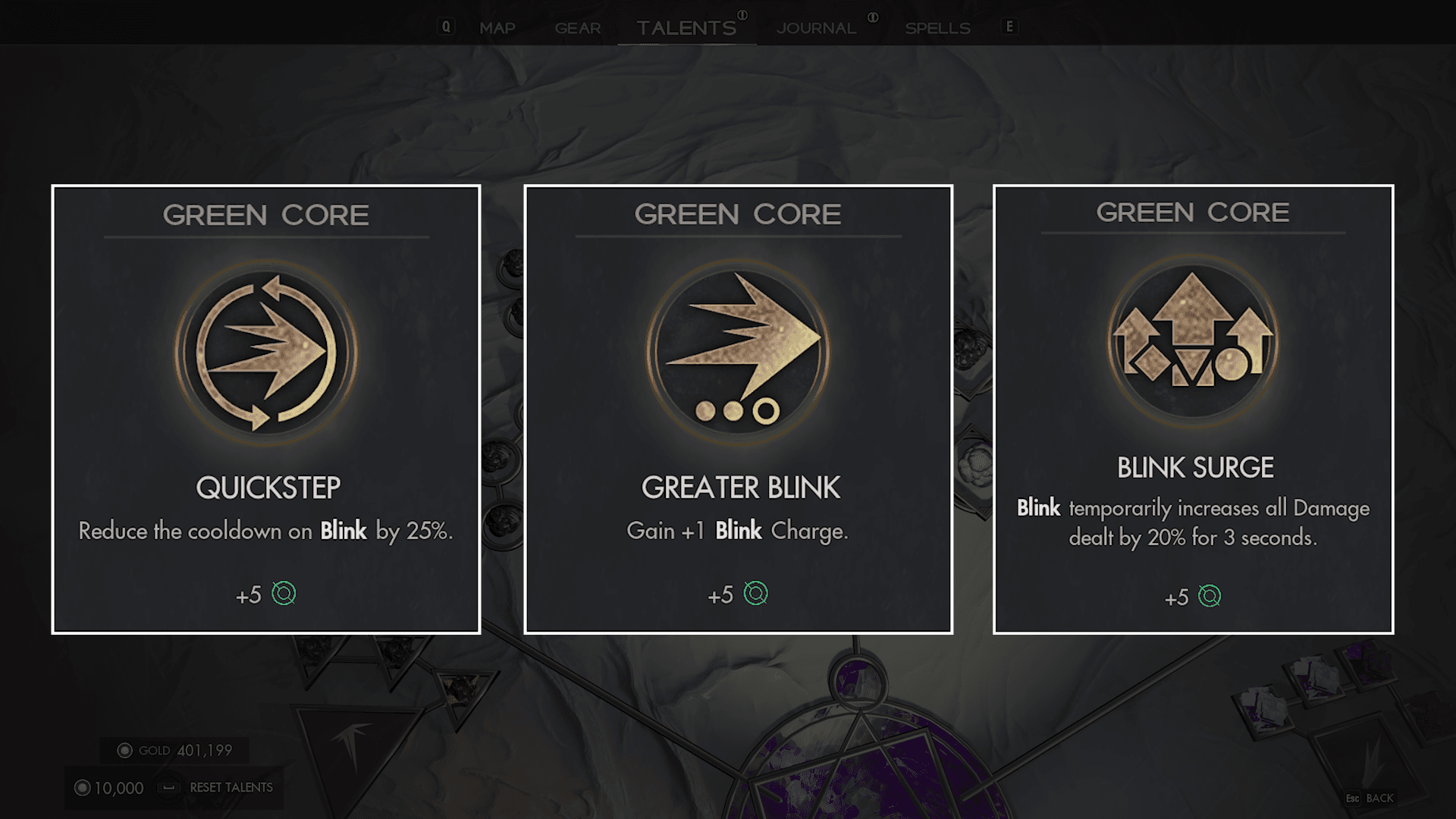
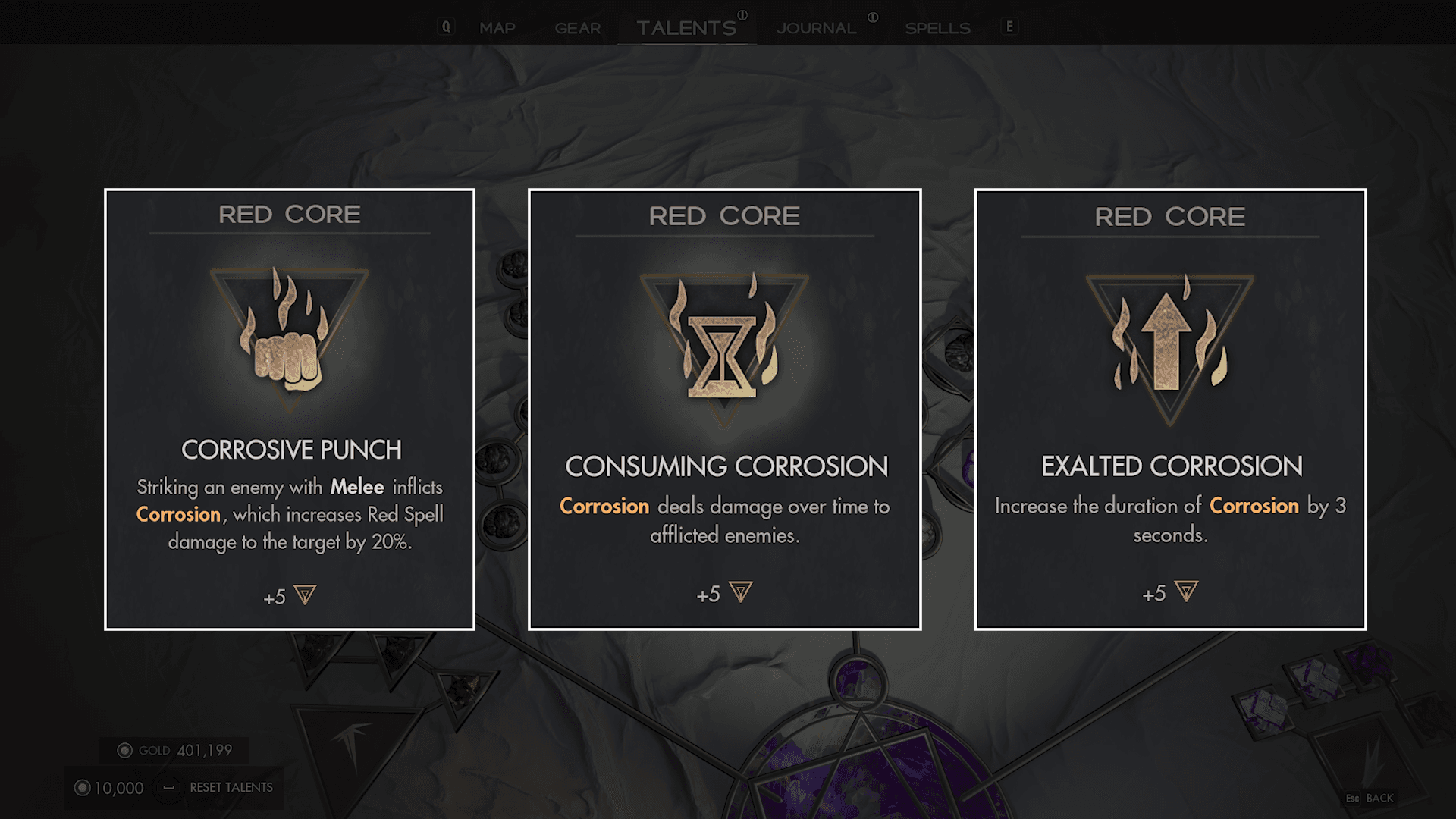
Crafting
Surprisingly the game also features a crafting system, albeit simple, but effective. As you play, you’ll collect gold and colored essences that are used as currency within the system. No rare or fancy objects needed to craft a specific weapon or piece of gear, just two widely available resources. It’s as straightforward as it gets. Different rarities require more materials, and you can upgrade each rarity a limited number of times before it reaches a ceiling. Upgrades offer incremental increases to each stat associated with that particular piece, and if you have unused pieces of gear, you can sell them to recoup some coin.
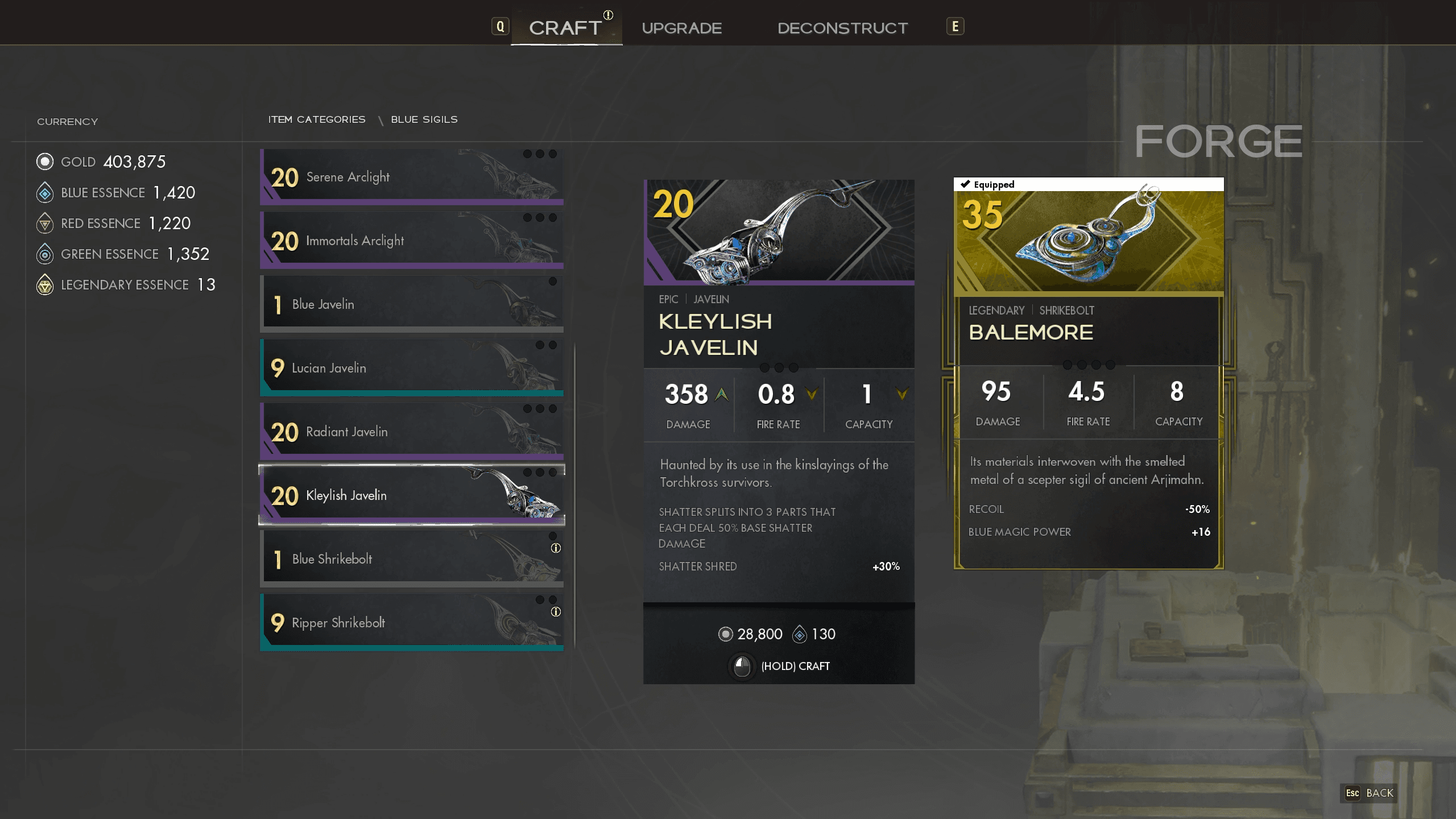

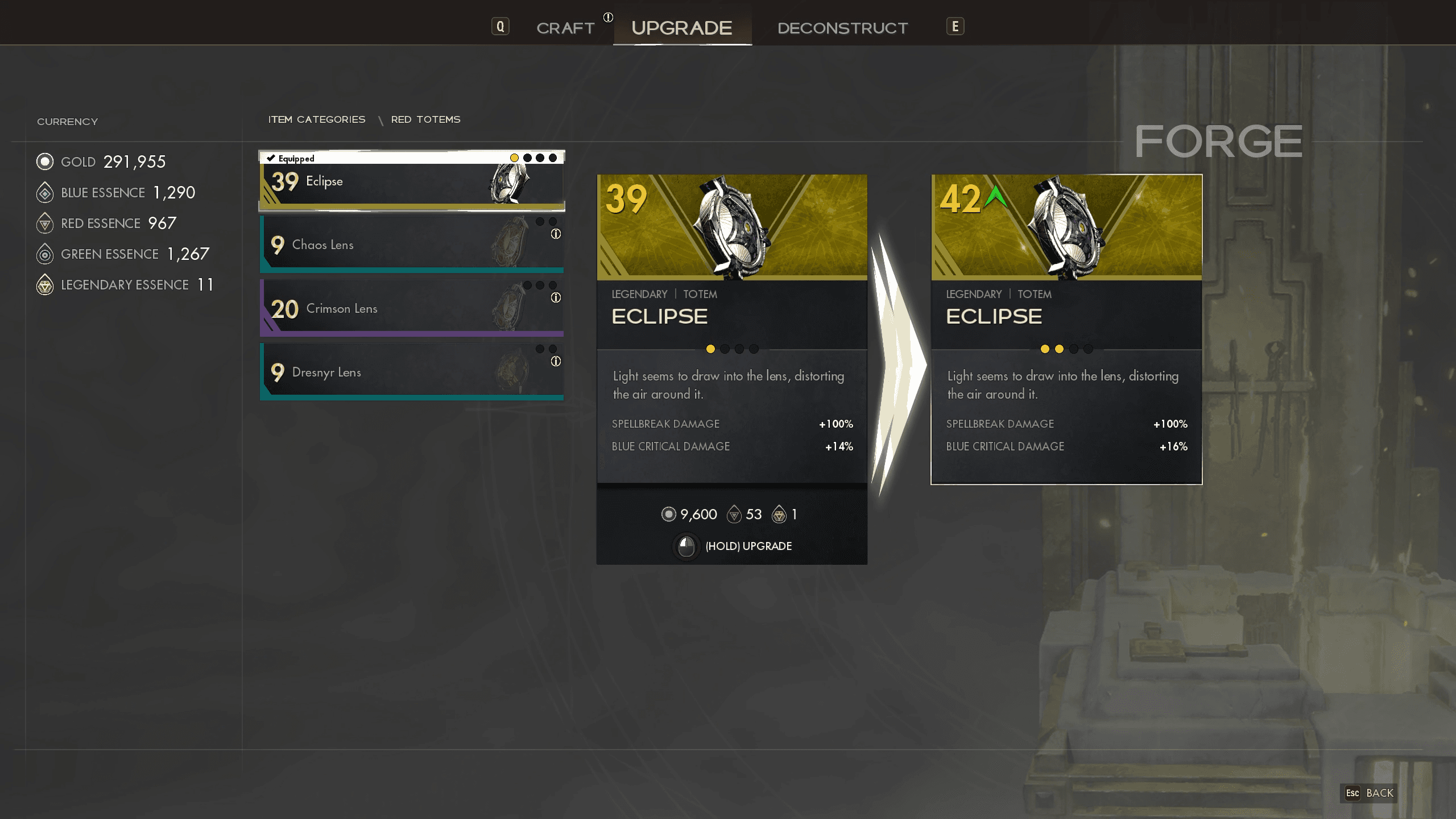
To be brutally honest, that is the name of the series after all, this just fell really flat for me. In 2023 this felt arcadey and almost shoehorned in and because of how vanilla the system is it stands out, but not in a good way. I’m not saying we needed the complexities of a modern Call of Duty workbench system in this game, far from it, but I think I would have rather preferred more depth in the existing crafting system, or something else entirely. Crafting is a fine way to explore the different sigil offerings in the game, but it’s far from a satisfying system.
Map
Since we’re on the subject of systems I did want to point out the map which is, well, a map, and a pretty decent one at that. I always appreciate when a team develops a true 3D map that helps players navigate not just horizontally, but vertically as well, especially in large spaces. The game’s map is also filled with all the points of interest you’ll need to do just about anything. For completionists out there, each zone shows you exactly what’s left to collect so while that doesn’t leave a lot to discover yourself it does ensure you see and do everything there is to experience in the world.
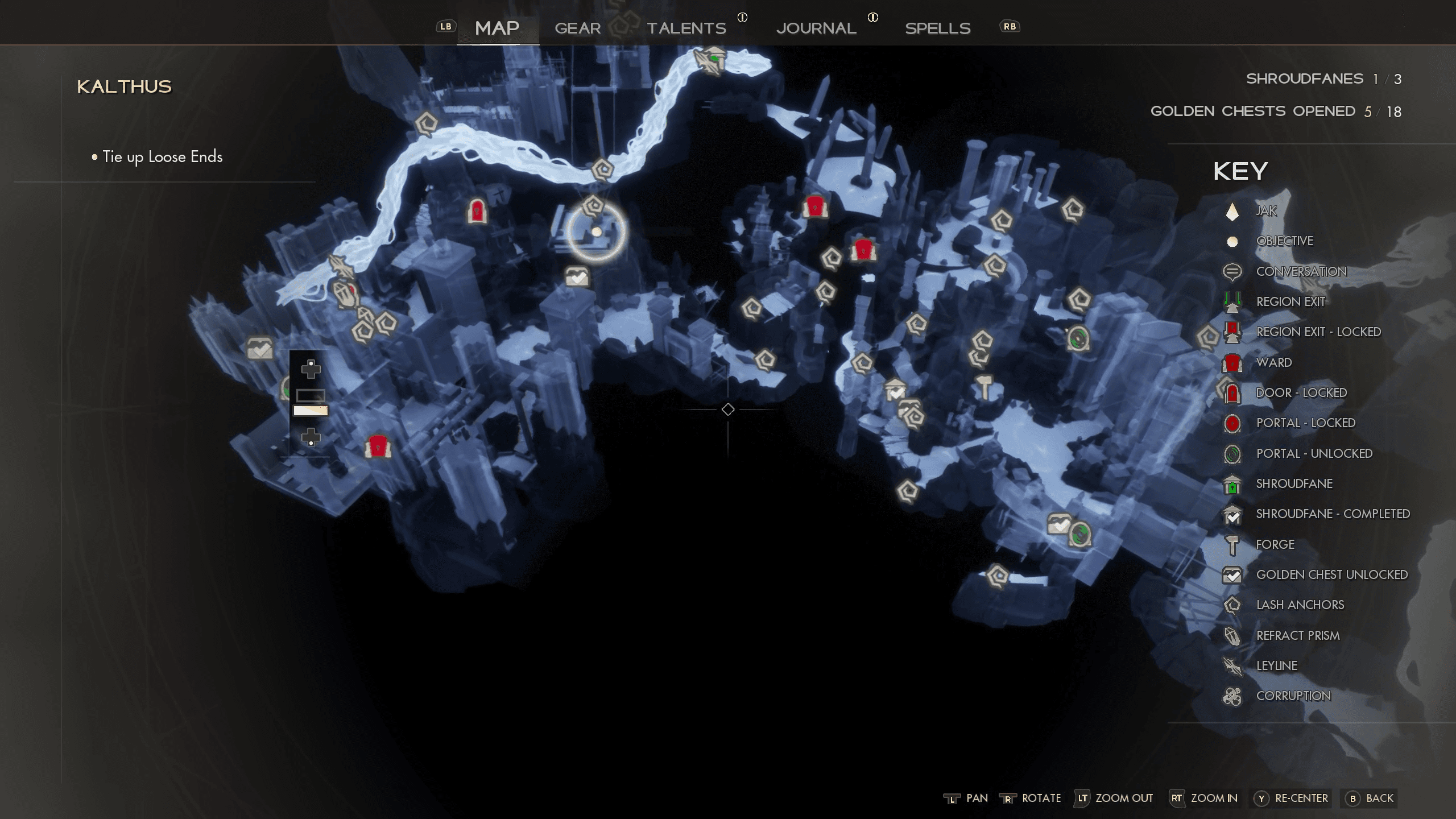
Puzzles
For a single player action game you wouldn’t necessarily expect there to be a lot of puzzles scattered around the world but they’re actually a rather big part of the experience. As we talked about before you’ll gain abilities throughout your playthrough that allow you to go back to areas previously inaccessible and unlock the secrets within. A good amount of these puzzles take advantage of your magic to interact with the pieces. Things often need to be manipulated with an Animate augment, or altered with your Refract ability. For the most part you can choose to engage with these as you progress, or skip them and come back when your story playthrough is complete.
The variety of puzzles isn’t anything earth-shattering. They’re not super in-depth, at least the ones I dabbled in, but you still get that satisfaction upon completing them. They’re littered everywhere, and are arguably hard to miss. There can be multiple in a single area, so it was kind of neat deciphering which environmental objects were a part of which puzzle and which ones were there as a mere distraction. Most importantly the rewards ranged from some gold all the way up to legendary pieces of gear to help round out your arsenal.
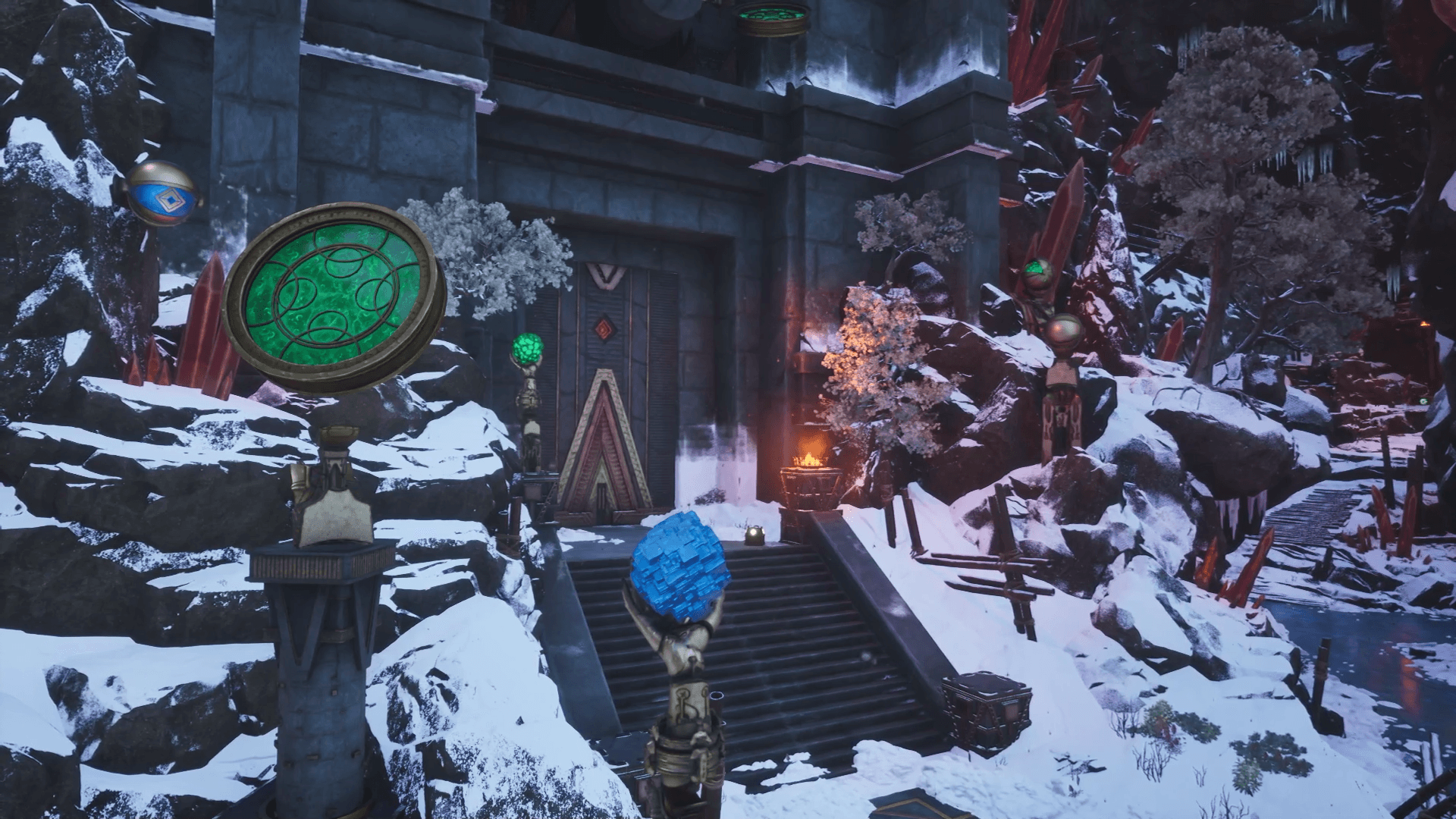
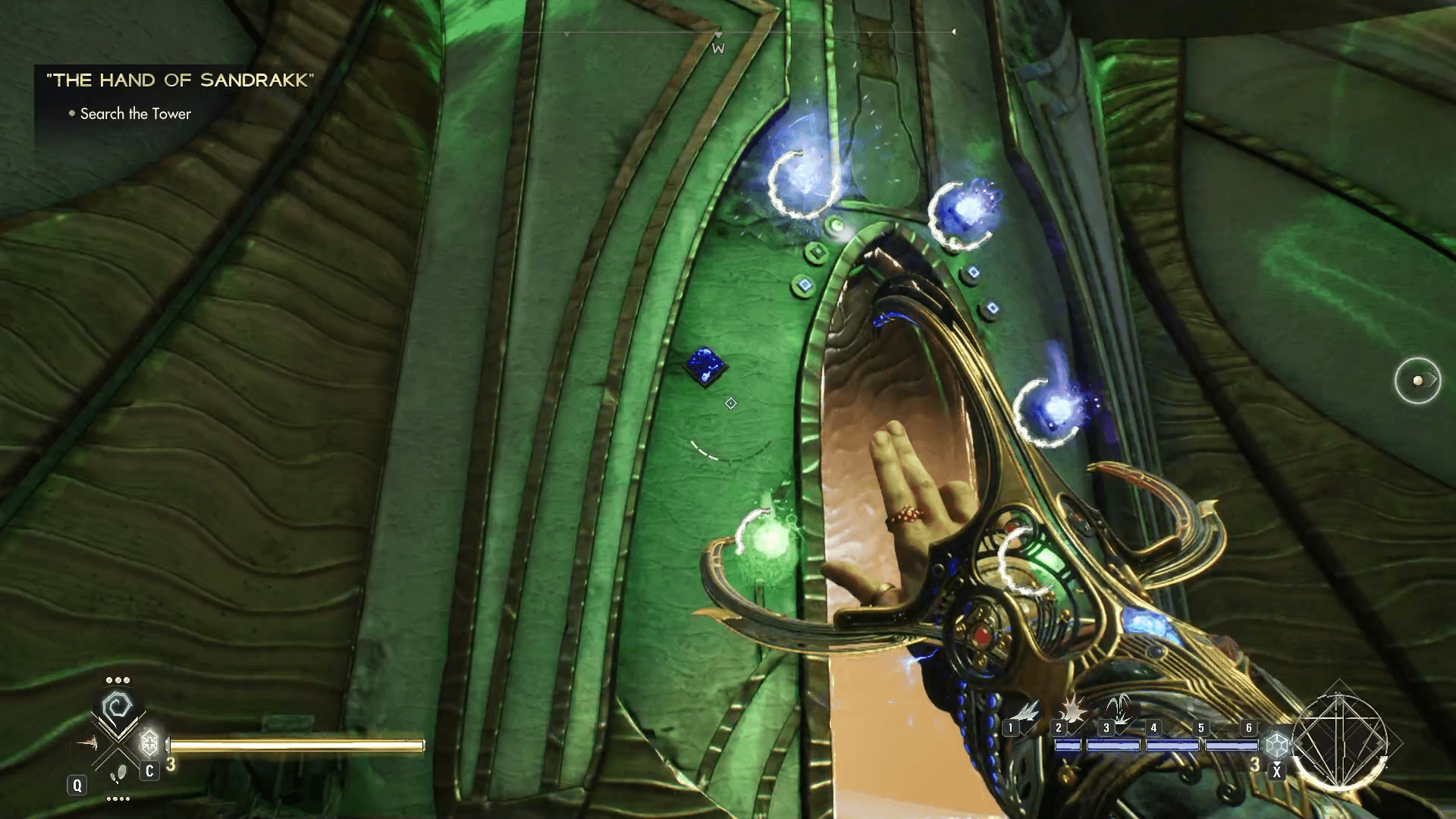
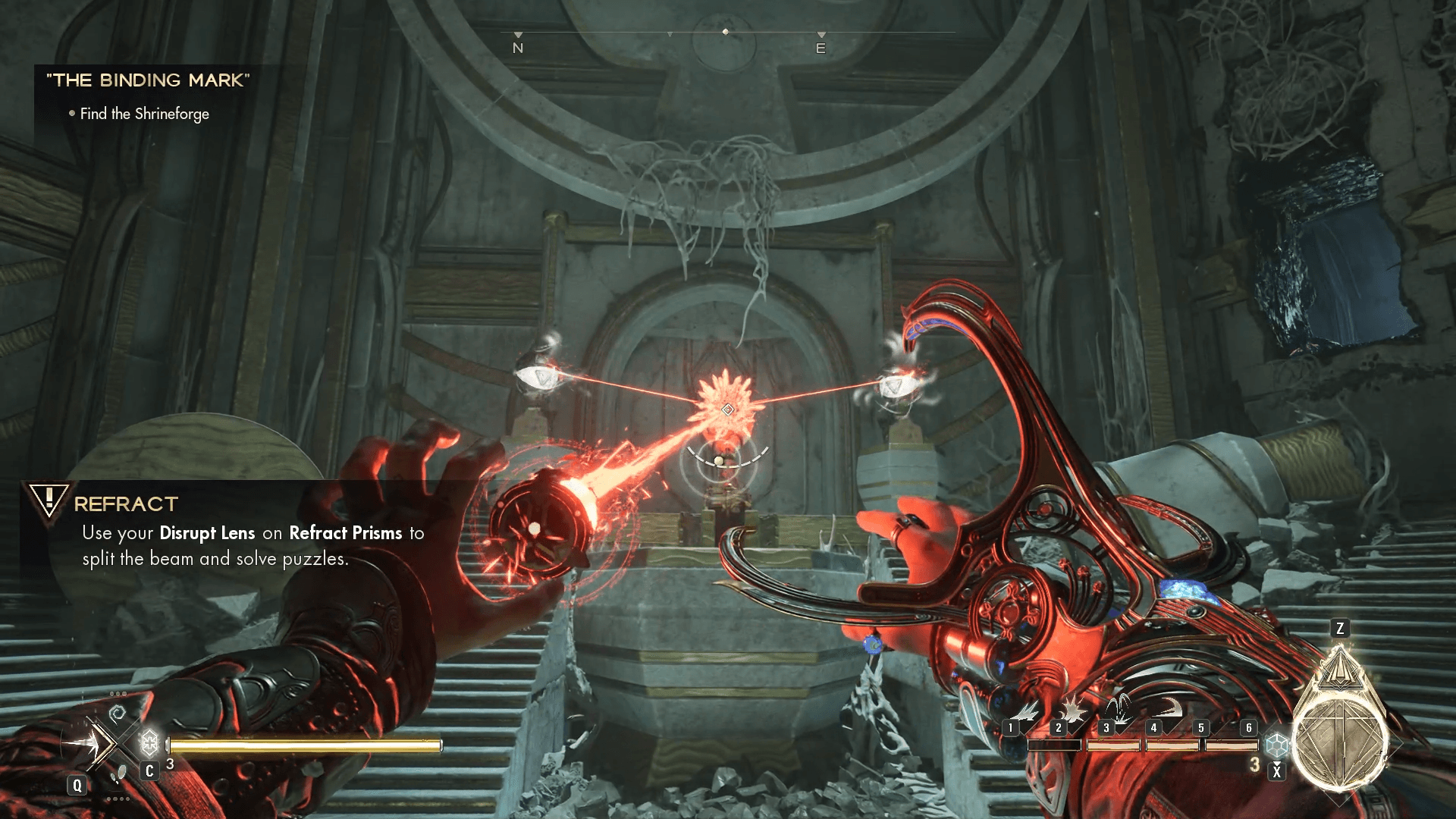

Shroudfanes
Tied to some of these puzzles and hidden areas are the entrances to Shroudfane’s, which are optional challenges hidden across the game and touted as some of the hardest content you can attempt. These ethereal realms introduce you to some seriously hard fights, typically with a single big bad and a few waves of enemies. This did breakup the experience nicely, but I’ll admit, while definitely difficult, there wasn’t much variety to these, at least not the ones I experienced. They’re not unique bosses or enemies, simply beefier versions of what you’ve already encountered. I was hoping for something truly epic here, only to be met with more of the same.
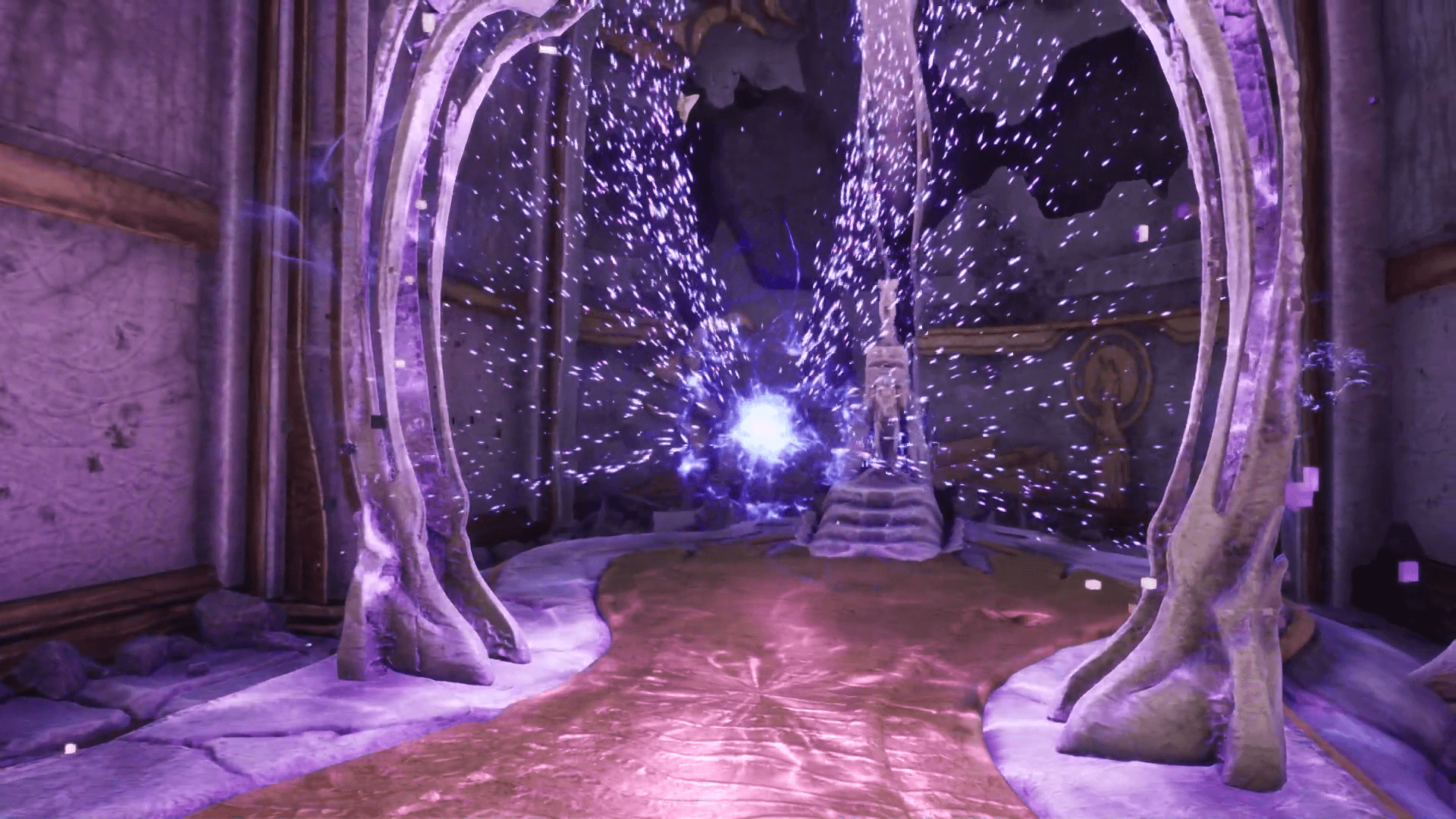
Now, there are technically six red shroudfane’s that can be unlocked once you complete the story that are the most difficult, but I didn’t hunt one of these down. It’s possible there are some unique encounters there, but if my experience is any indication, I wouldn’t count on it. Nonetheless, the rewards are worth it, usually awarding a piece of legendary gear or a new spell augmentation for your troubles.
Environments
The rest of the world offered slight variations between encounters, chest hunting, and additional puzzle solving, but what really continued to capture my attention over and over were the environments, which were just outstanding. The team really tapped the full potential of the Unreal 5 engine. It was the perfect blend of fantasy meets reality. The polish and level of detail put into these fantastical worlds was impressive. I didn’t notice any clipping, asset deterioration, scaling issues, nothing. They were incredibly well done, fully immersive worlds that I truly wanted to explore.
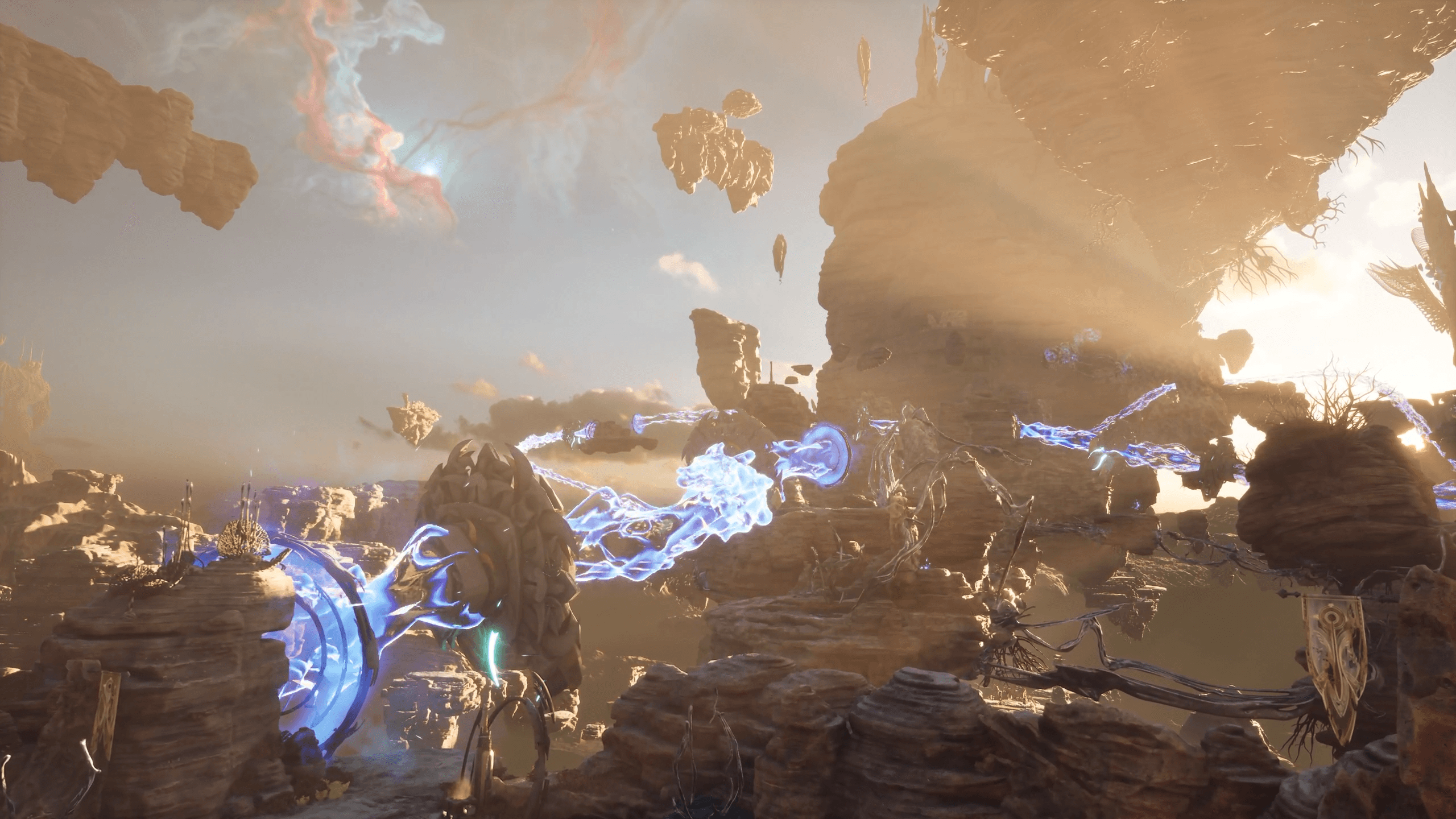
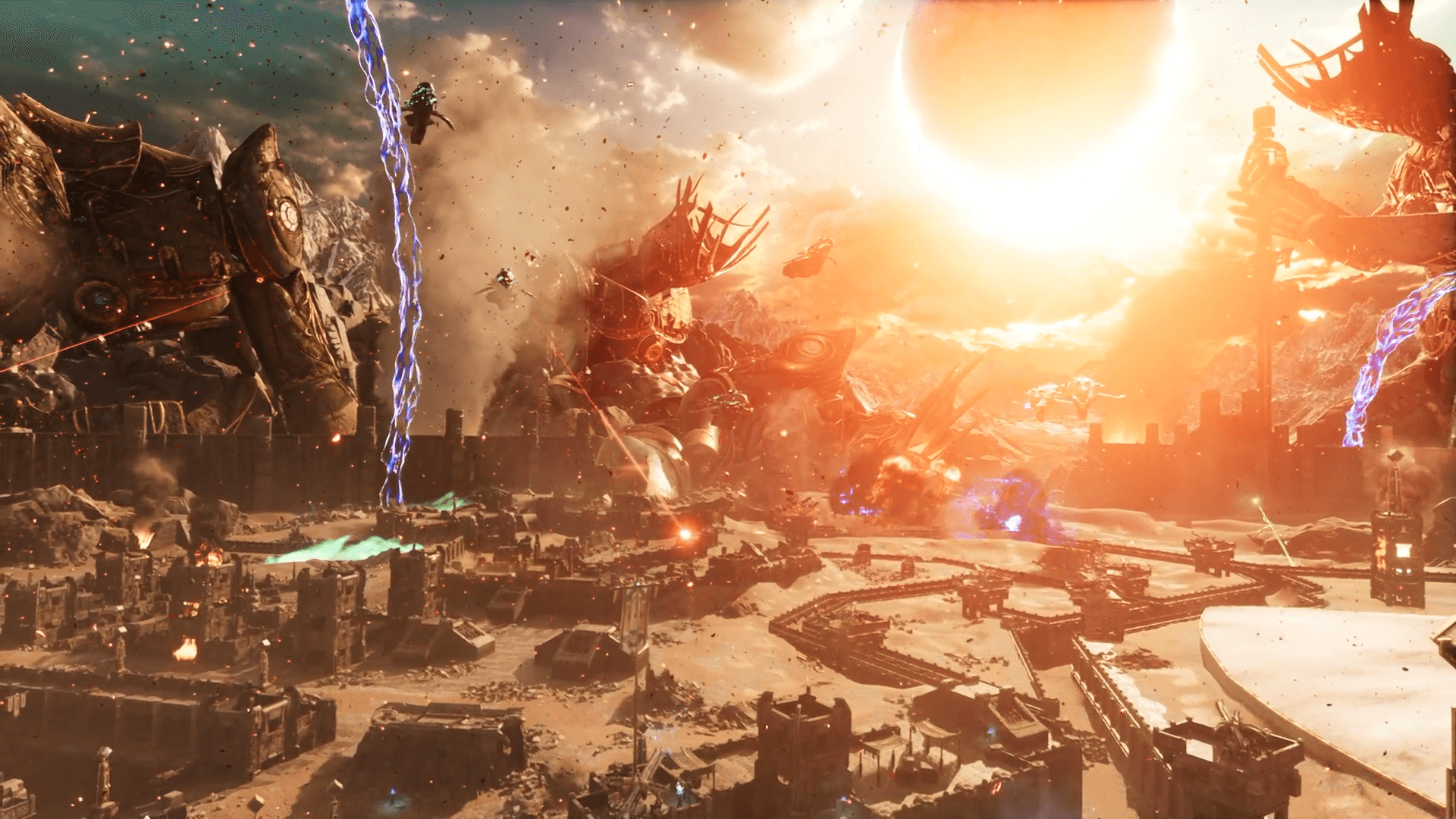
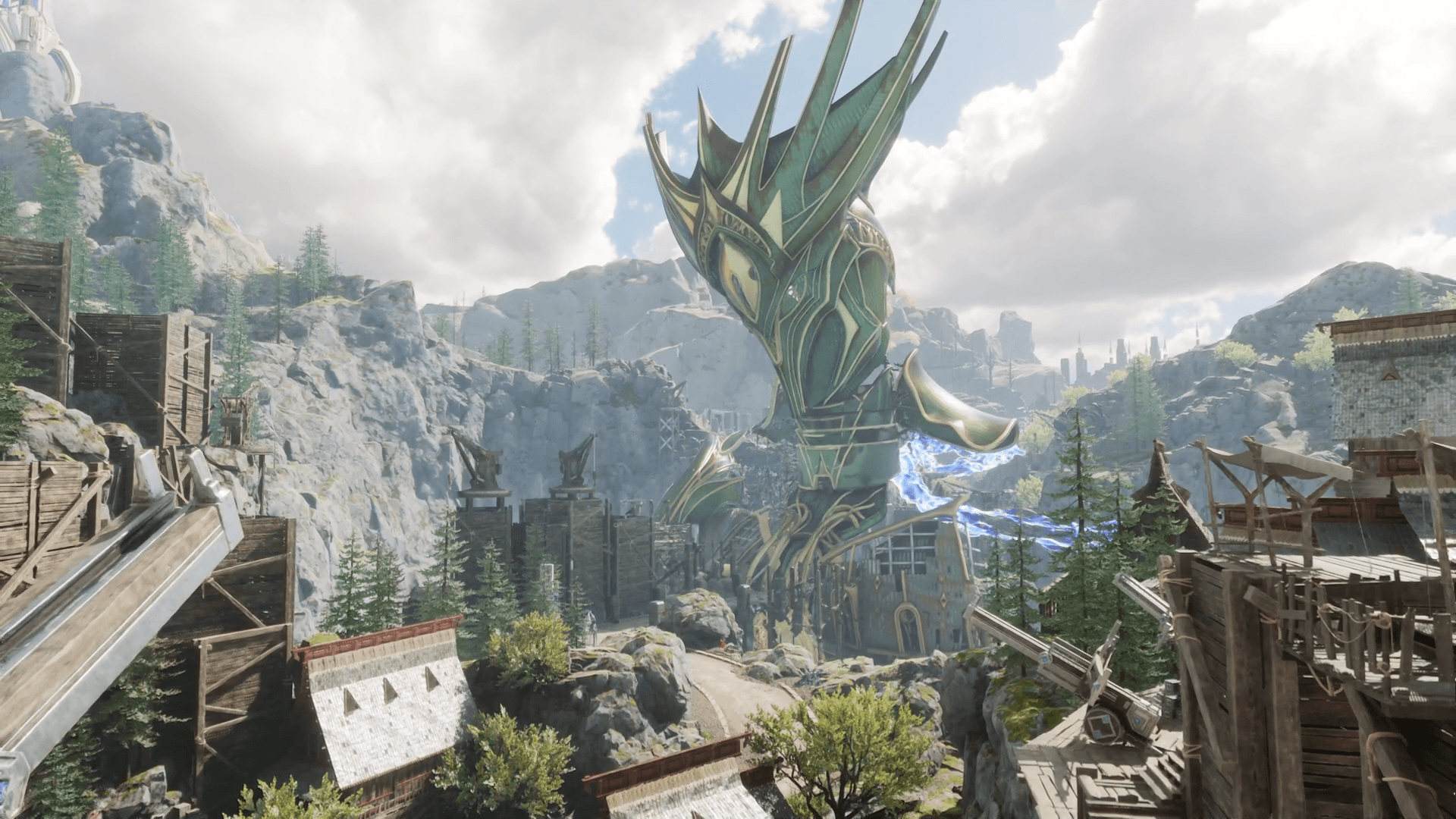

Moving between the world was also pretty seamless, taking advantage of a fast travel portal system. These portals activate as you move close to them and once you’re at one you can easily move between other unlocked locations. Nothing to write home about, just a solid functional system.
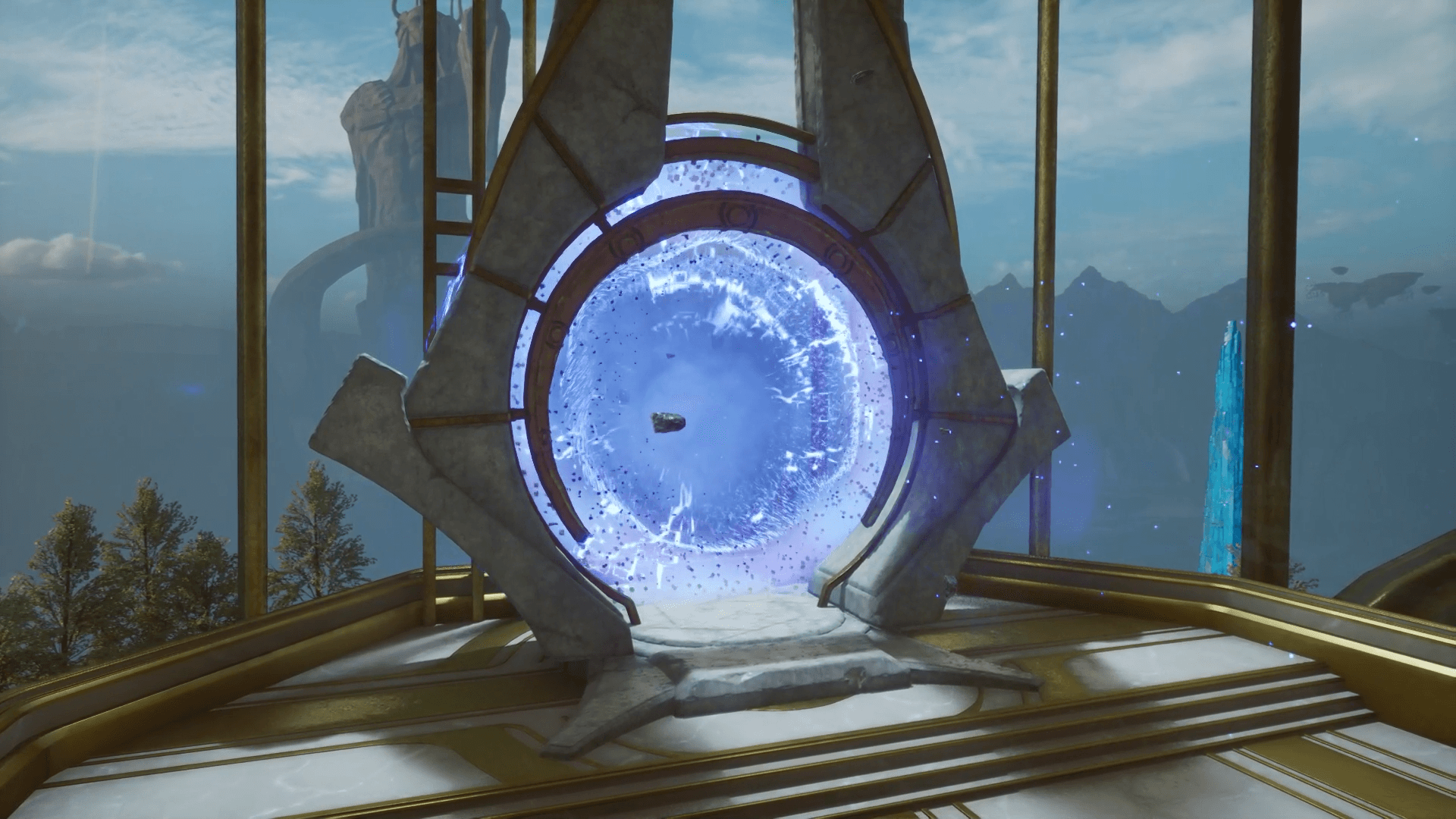
I did also want to point out the occasional magic vein that ran through parts of a zone called Leylines. Eventually you’ll gain the ability to travel these with your tether, but I’ll admit this was my least favorite part of the game. The physics here were…well not good and a bit robotic. It felt like I was swinging from a steel pole rather than some magical tether. Not a huge deal as this was such a minor part of my experience, but janky enough that it’s worth calling out.
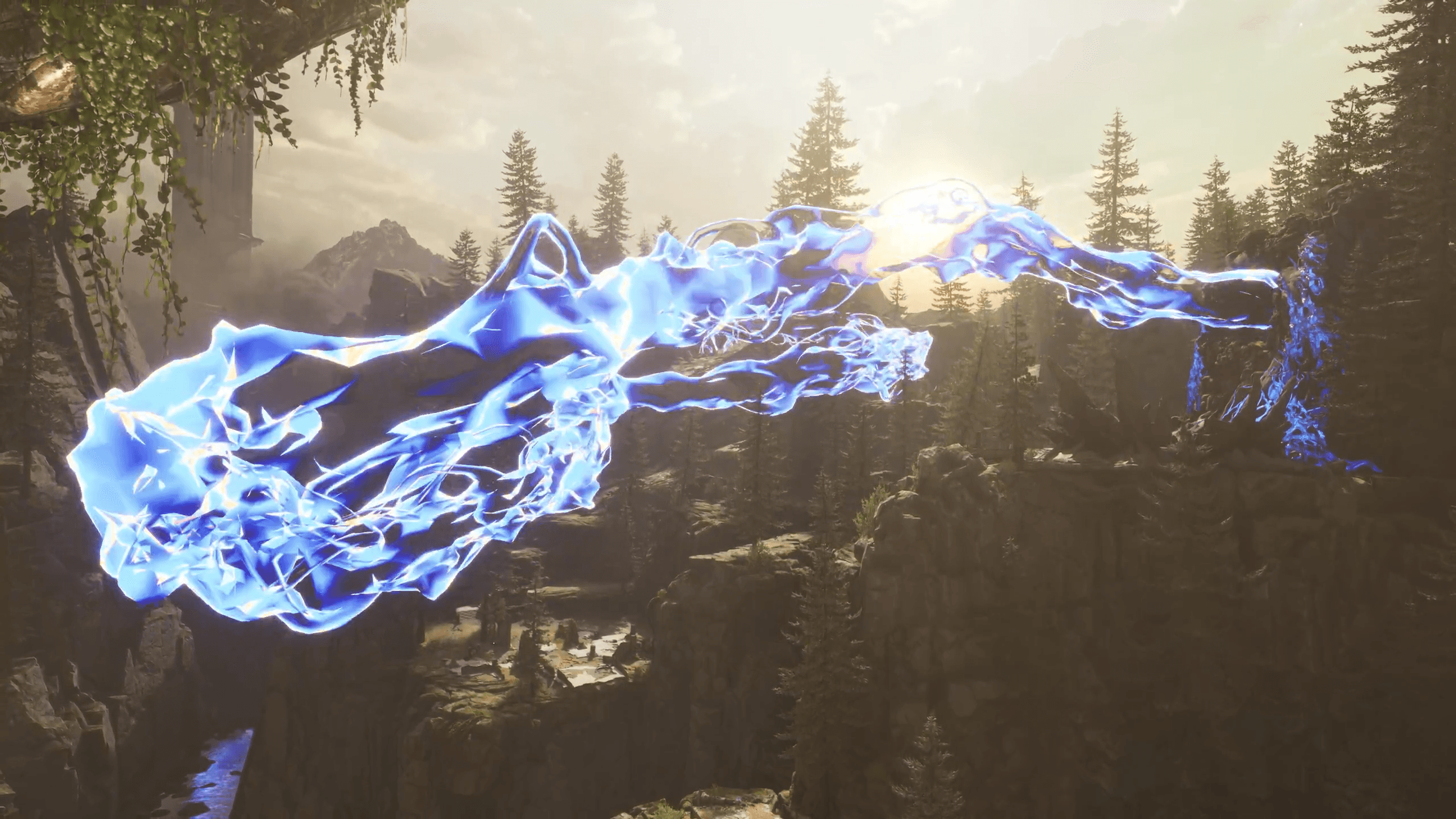
A Few Issues
With so many recent AAA flops I almost expected “Immortals” to come out and either be filled with bugs, or let us down with a lukewarm experience that left me hollow and unimpressed. I was looking for issues, believe me, but looking back on my experience, I have to say I genuinely had a good time with the game. There were very few bugs, the balance between story and action was on point, and while the progression systems weren’t ground breaking they did enhance the action in the right ways.
No game is truly perfect and while I did enjoy Immortals there are definitely some issues:
One problem hit me right off the bat. Major FPS issues when the game was attempting to build out its shader cache. I’m talking down to 7 to 9 FPSon the title screen. The team addressed this super quick and sent us a piece of the day 1 patch which immediately fixed the issue and never reared its head again, great proactive work by the team to address a potentially crippling performance issue.
The only other ‘bug’ that I reported was a boss that glitched out and insta-died as soon as it’s cutscene was over. I was still able to progress, I just didn’t actually have to fight the boss to get the kill. The team also said this would be fixed with the day 1 patch.
Bugs can be patched, performance issues addressed but one gameplay decision that constantly got in the way of my experience was the ridiculous amount of effects happening on screen, constantly during combat. I get it, it looks cool seeing particles flying around but man does it get overwhelming quick. Overwhelming to the point where you get disoriented. It was so easy to lose track of enemies in that glorious mess of colors and using the thin red dots at the top of your HUD just didn’t help solve that problem. I’d finish a combat sequence thinking I killed everything, only to be knocked upside the head by an enemy I didn’t realize was still alive. Like all things you do get used to it over time, but this particular experience never really worked itself out.
Final Verdict
To be blunt, Immortals of Aveum isn’t some industry-defining masterpiece that’ll swoop in and steal game of the year, but it’s a genuinely polished experience that manages to combine a lot of familiar elements of games we’ve likely all experience at some point in our life, and put a new spin on the entire package.
Genuinely, I think this is a good game, worth a playthrough if you’re into high fantasy, fast paced, FPS action. Coupled with a more arcadey experience filled with puzzles to solve, rewards to hunt down, and a decent story to boot. It’s a solid title from a new team and that means we’ll be keeping an eye on the future of Ascendant Studios.






